
If you like this spider hat, there may be just enough time before Halloween for you to knit one or two. The pattern, by Claire Slade, is available on Ravelry. Several of the members of my knitting groups have made … Continue reading

If you like this spider hat, there may be just enough time before Halloween for you to knit one or two. The pattern, by Claire Slade, is available on Ravelry. Several of the members of my knitting groups have made … Continue reading

This is the best sweater I have ever made. I have been trying to learn to knit sweaters since the start of the pandemic when I joined an online knitting group. I was invited by some spinners that I had been spinning with in person. I have known how to knit for a long time, but never got beyond hats, scarves and mittens. But now, with the help of some wonderful knitters, I am moving forward.

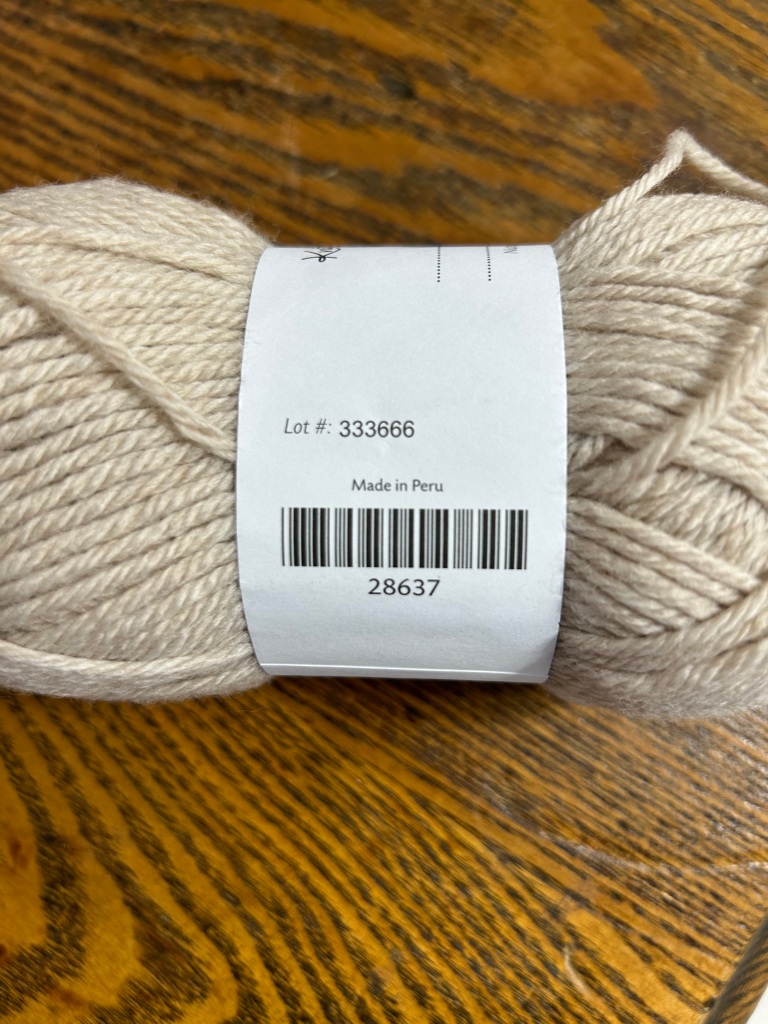
The sweater alternates rows between this beige color Swish yarn from KnitPicks, and a handspun yarn.
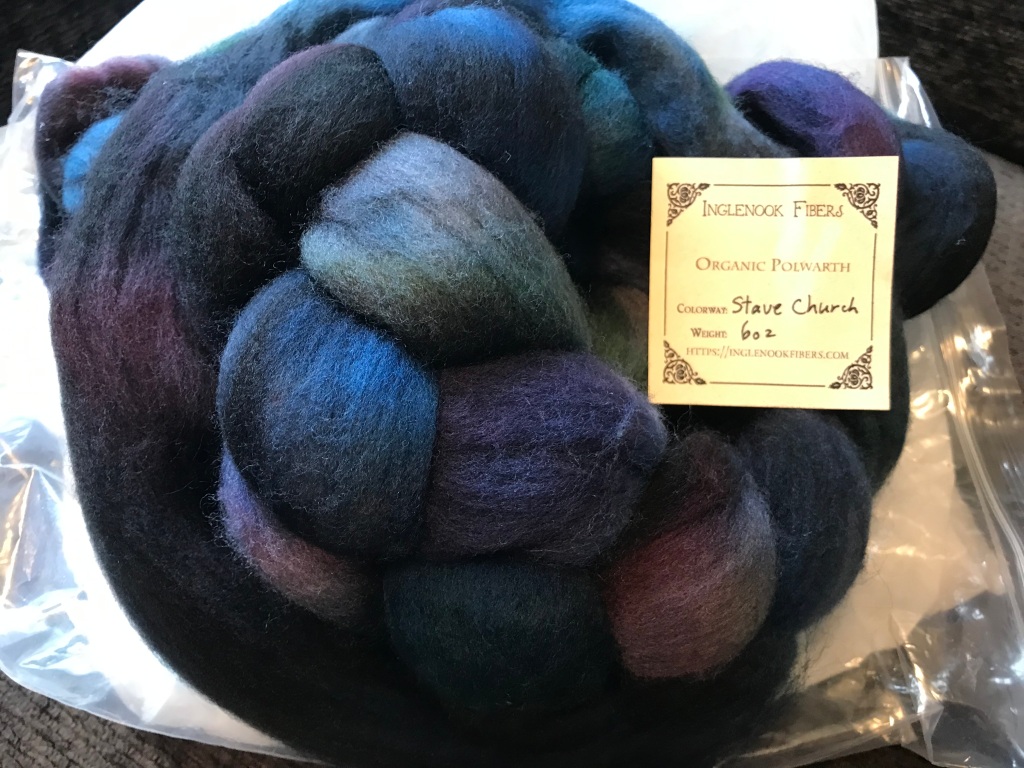

The handspun yarn is a 2-ply. One ply is organic polwarth from Inglenook Fibers. It is dark colors of blue, green, and purple throughout called Stave Church. The other ply, Winter Wren, is the same base but its color is variable.

The Winter Wren is colorful in the middle third but gray for the first and last thirds.
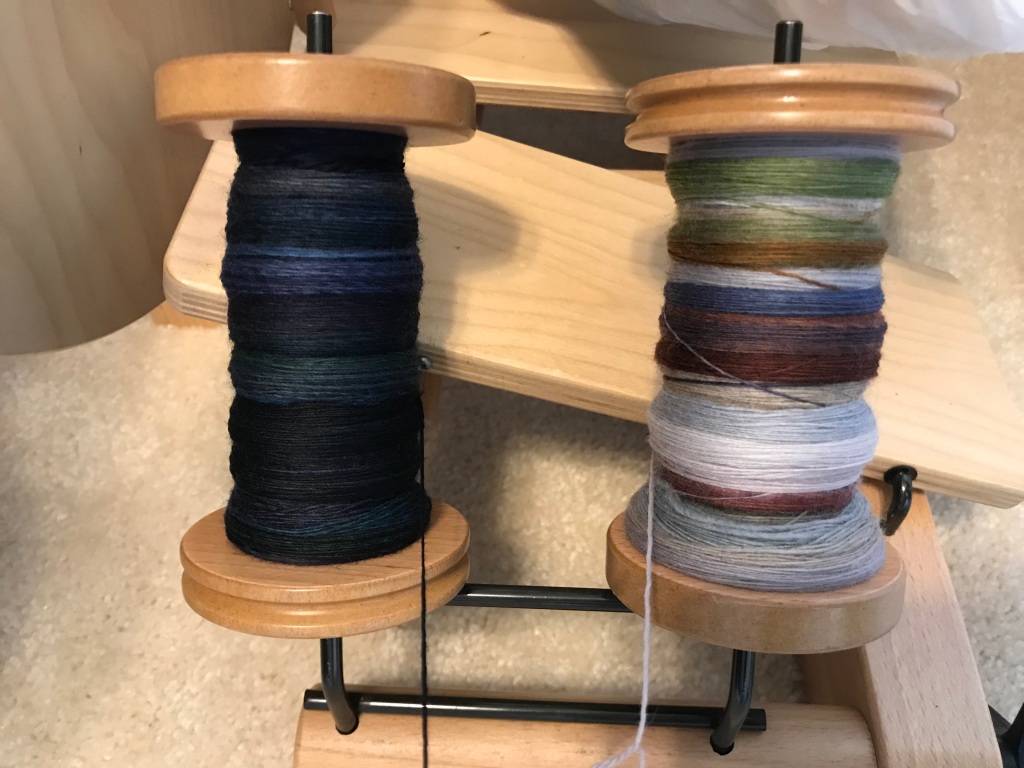
When I plied the two singles, the resulting yarn had lighter and darker regions.

Because I spun the yarn in lengthwise strips, I knew it would run through light and dark sections repeatedly. I also thought there would be enough yardage for a sweater and that was my original plan.

But then, in March, my friend showed up at a spinning retreat in a sweater called Metamorphic. It was knit with two yarns, alternating rows. It was so pretty. So, I downloaded the pattern and started knitting. It is a yoke sweater, knit top down, so when you are finished with the yoke you can try it on and see how it is fitting. Well, mine was WAY too big. I am a loose knitter and often have this problem. I pulled it all out and began again.
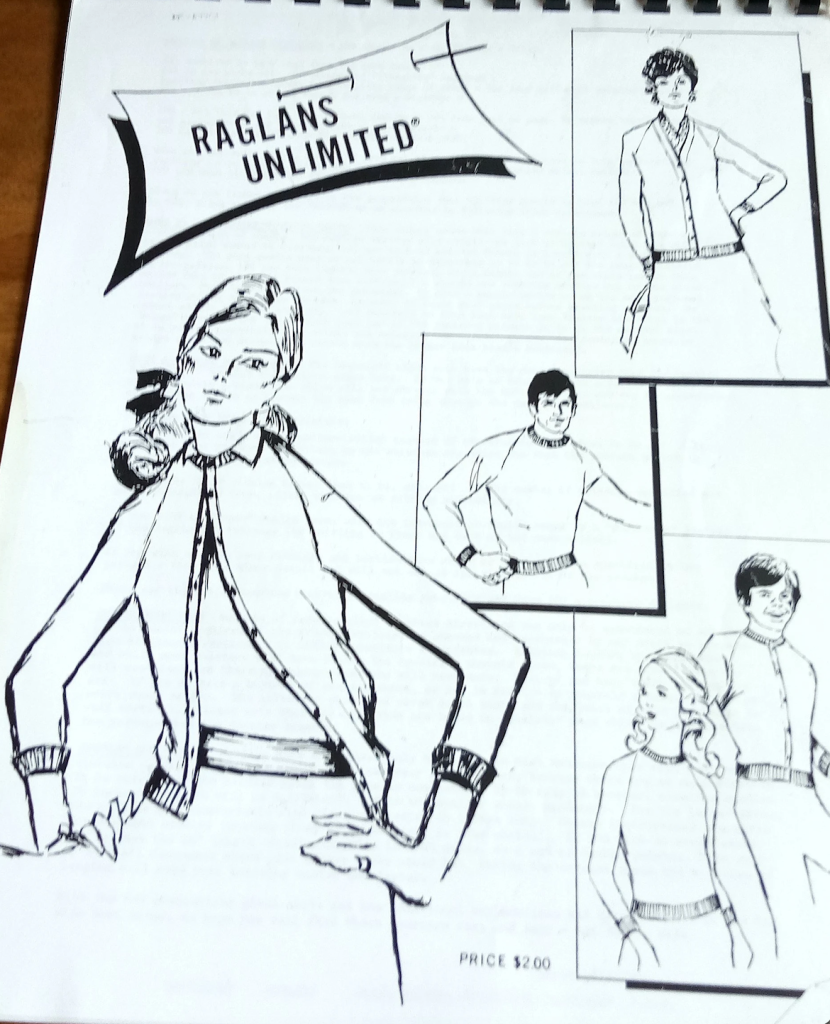
I have had luck with this pattern in the past, so I thought I would change the sweater from a yoke style to a raglan style. My plan was to keep everything else the same, but that is not how it worked out.

The Metamorphic sweater has some interesting features. It is knit inside out. Once you are done you wear it with the purl side showing. It has a pretty design feature where stitches are slipped to create vertical stripes at the center back and front, side seams, and sleeves. The yarn change occurs at the center back.

I decided to not do the slip stitches. As a result the yarn change at the center back has its own unique look. I tried to be as neat as possible and I like the look of the seam.

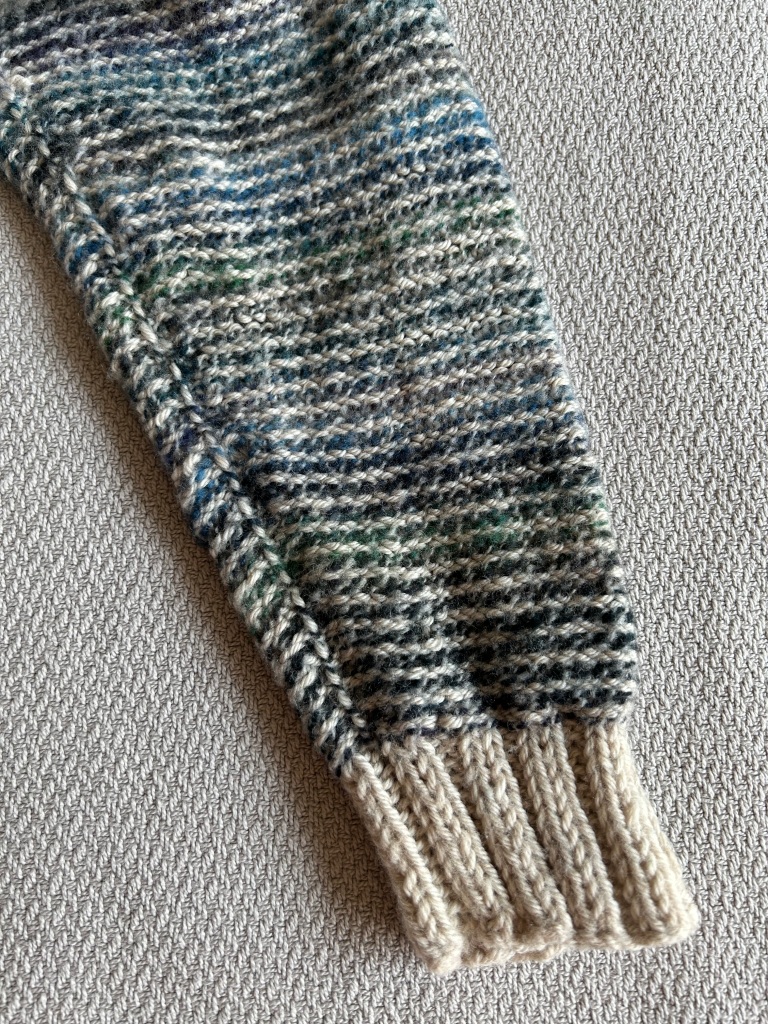
The raglan seam and the color change seam on the sleeve also added interest. I’m happy with the choice not include the slip stitch feature. I often knit my sleeves flat until I get to the cuff, but the alternating color rows made that impossible. So.. double points it is. The color change and the sleeve decreases made the seam tricky but I knit slowly and carefully and I am happy with the result.

This shows how the sweater looks on the knit side. It was hard to choose which way to finish it. I stitched the ends in carefully and I really think I could wear it inside out if I wanted to.

My favorite feature is that the bands for color from the center region of the Winter Wren roving actually show up in the sweater. There are two colorful regions, one on the yoke and one at the bottom of the body. I only used the light color yarn on the sleeves so I did not have to try to “match” any of the striping to the body.
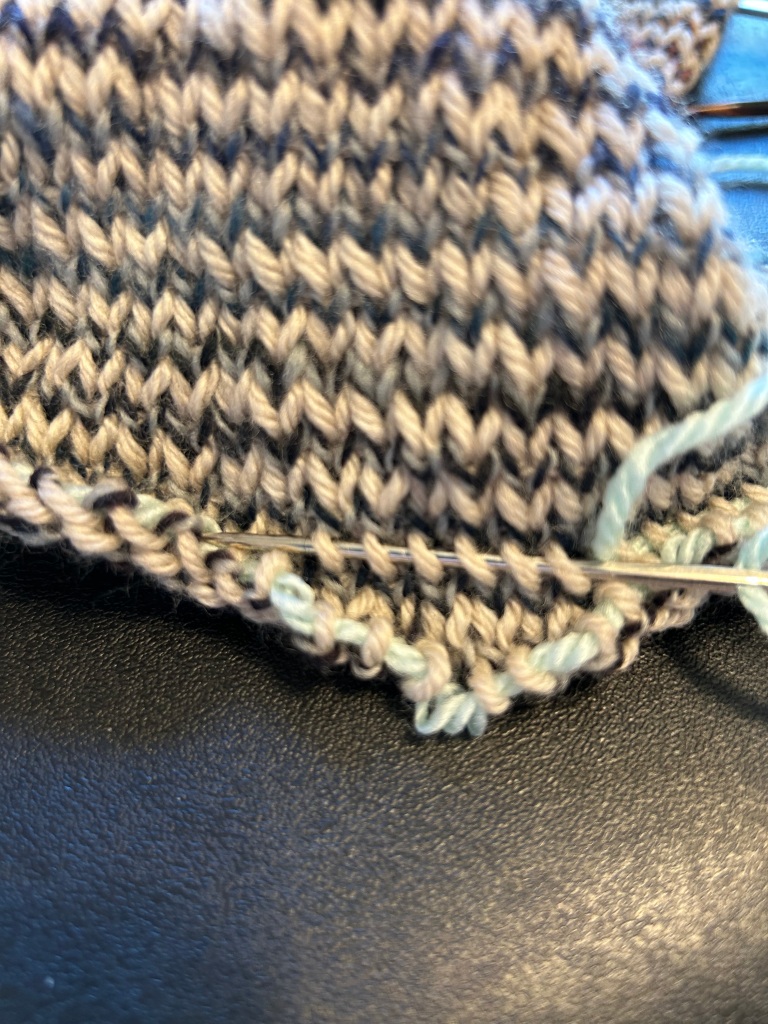
I will admit the sweater posed some challenges, especially getting the sizing right. At one point decided to pull out the first sleeve and change the frequency of the decreases to get the shaping better. I had not put in a life line as I often do so I decided to add one after the fact. To do so, I used a needle and thread to catch a row of stitches. This was very easy because of the color change. It made the stitches of a single row very easy to see and the life line was successful. Yay!


My sweater is definitely inspired by Metamorphic. The alternating rows of color, the use of seam design, the inside-out knitting, and the collar are from the pattern. My changes included not using the slip stitch and raglan design instead of yoke. After washing and blocking the sweater fits very well.
I hope you like my sweater. As always, your polite and helpful comments are welcome.

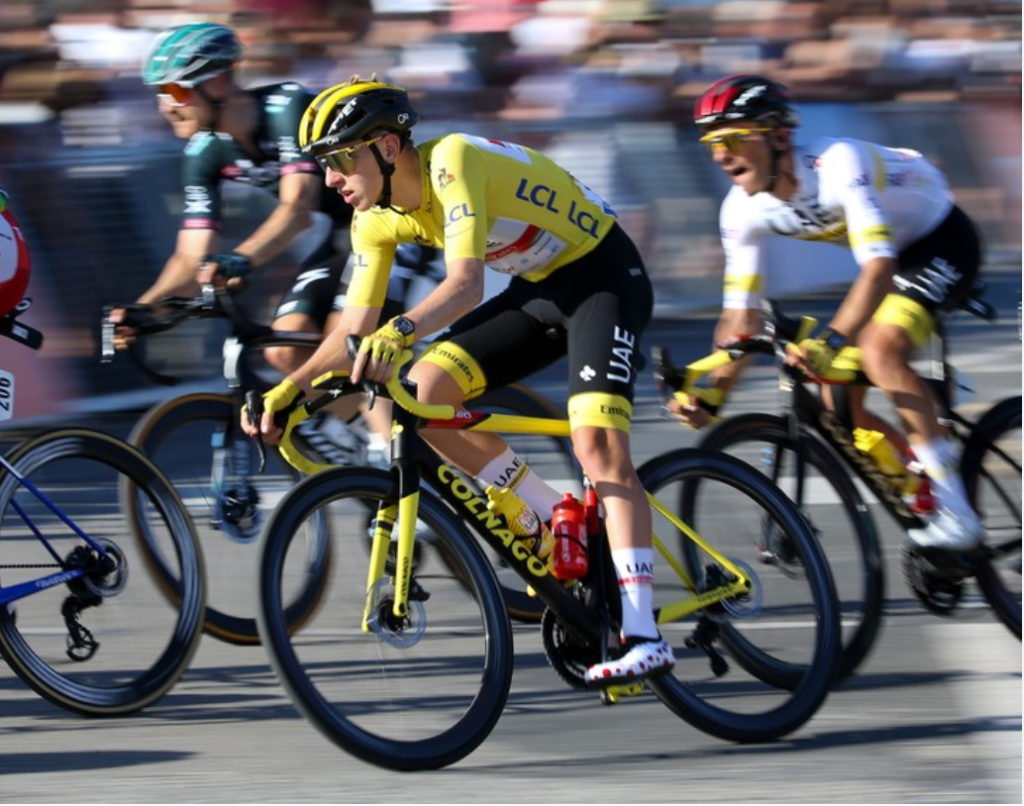
Spinning is the process of twisting wool into yarn. These days, when you tell someone you are spinning, they automatically think of a bicycle. In the past it would have been assumed you were making yarn. I’m not sure when the tipping point came.
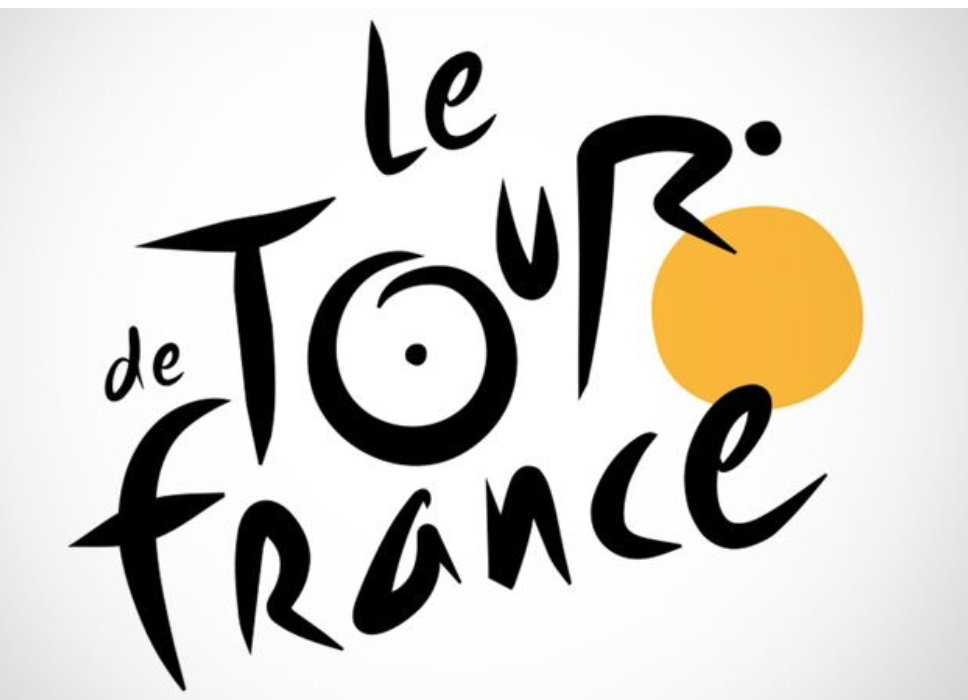
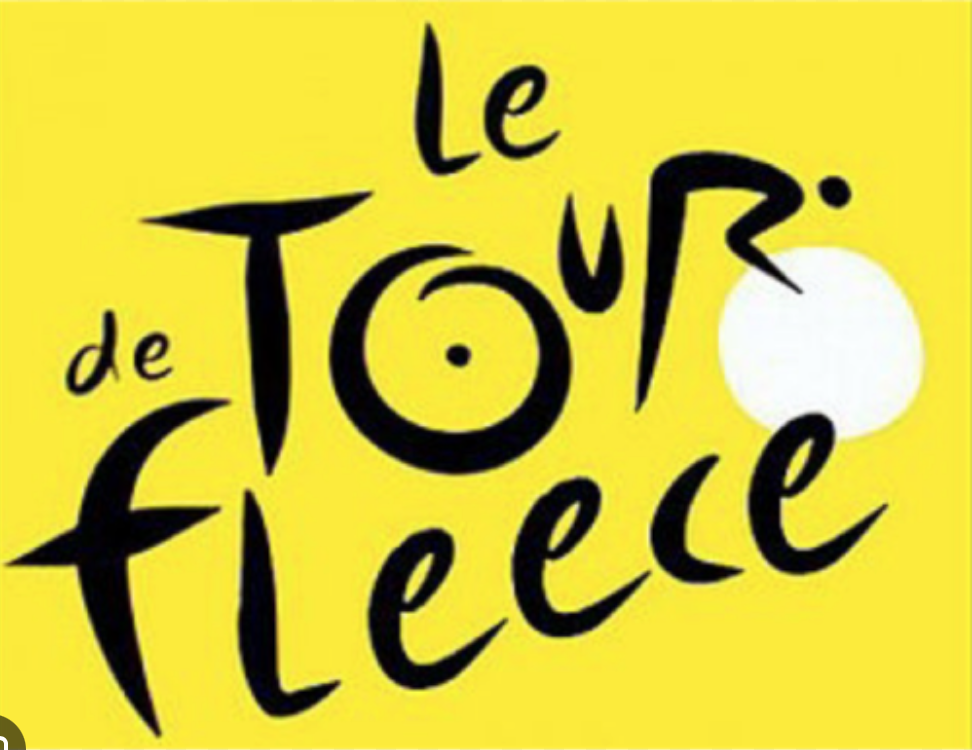
With the start of the Tour de France in July, spinners everywhere take the time to watch the race and spin some yarn. The idea started in 2006 when a spinner, Star Athena, thought of the event after seeing the success of “knit alongs”. In an interview in SpinOff magazine, she said that she and 16 friends spun and shared their work. The online event has really grown over the years now claiming over 10,000 participants.
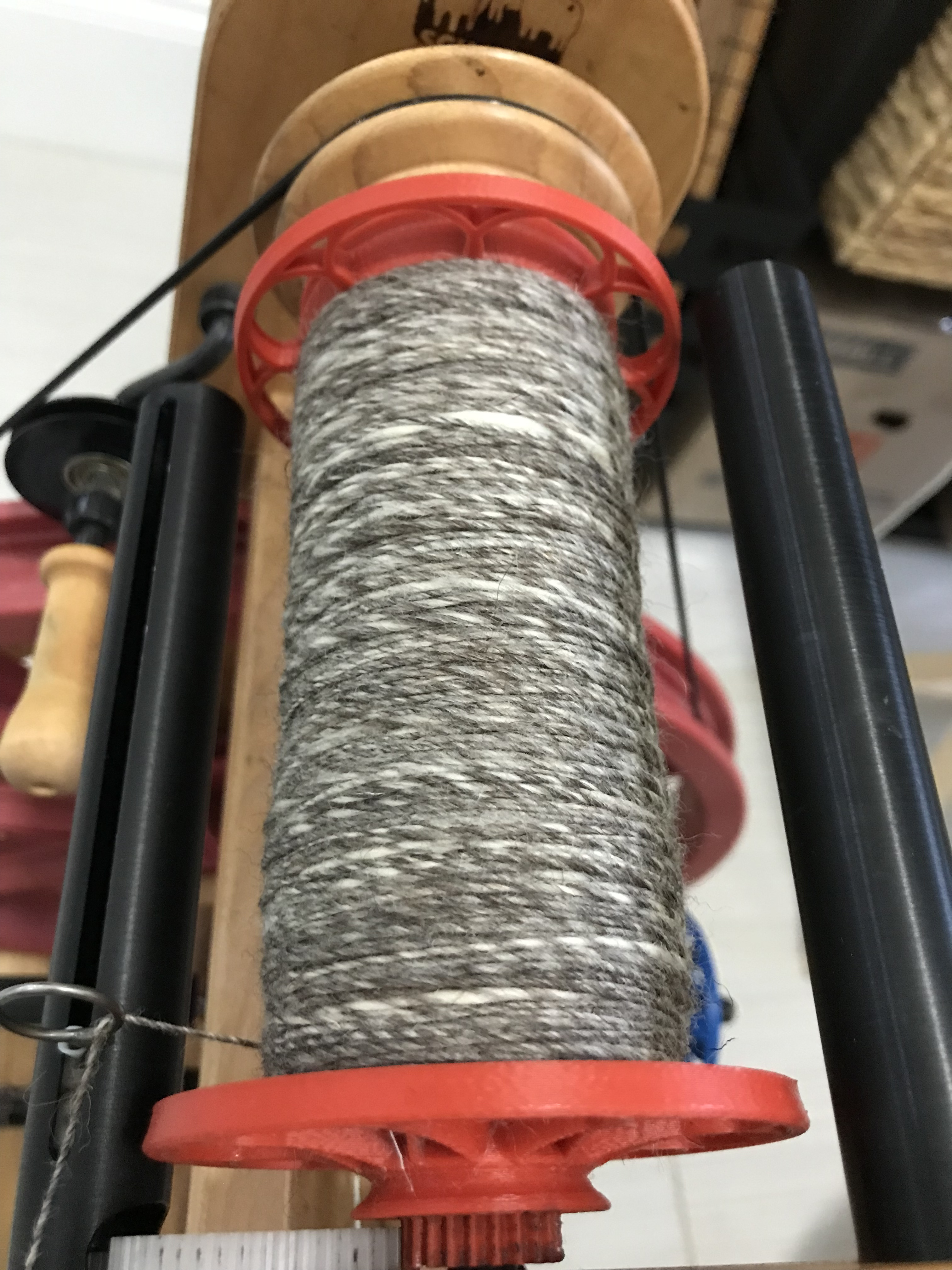
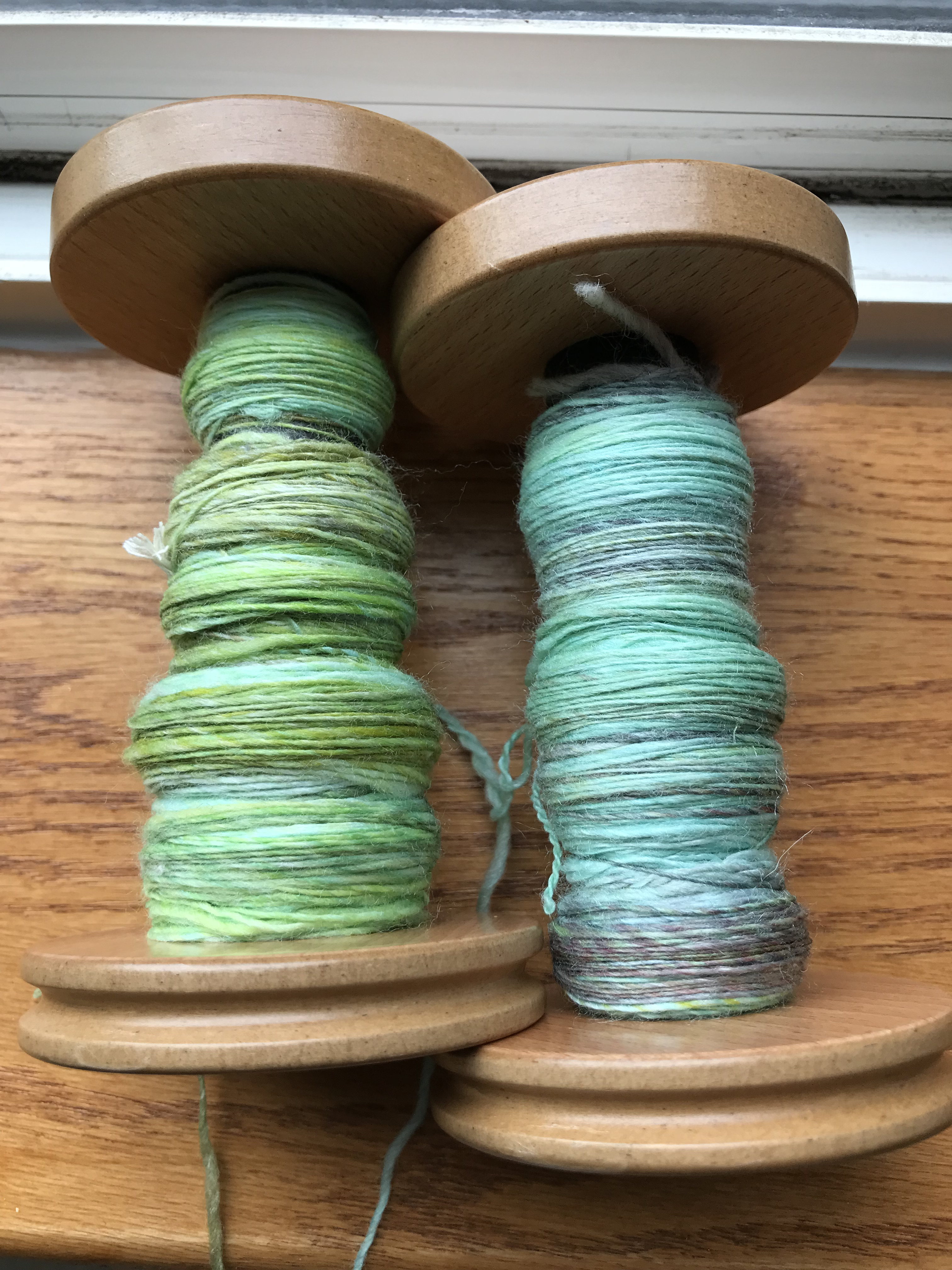
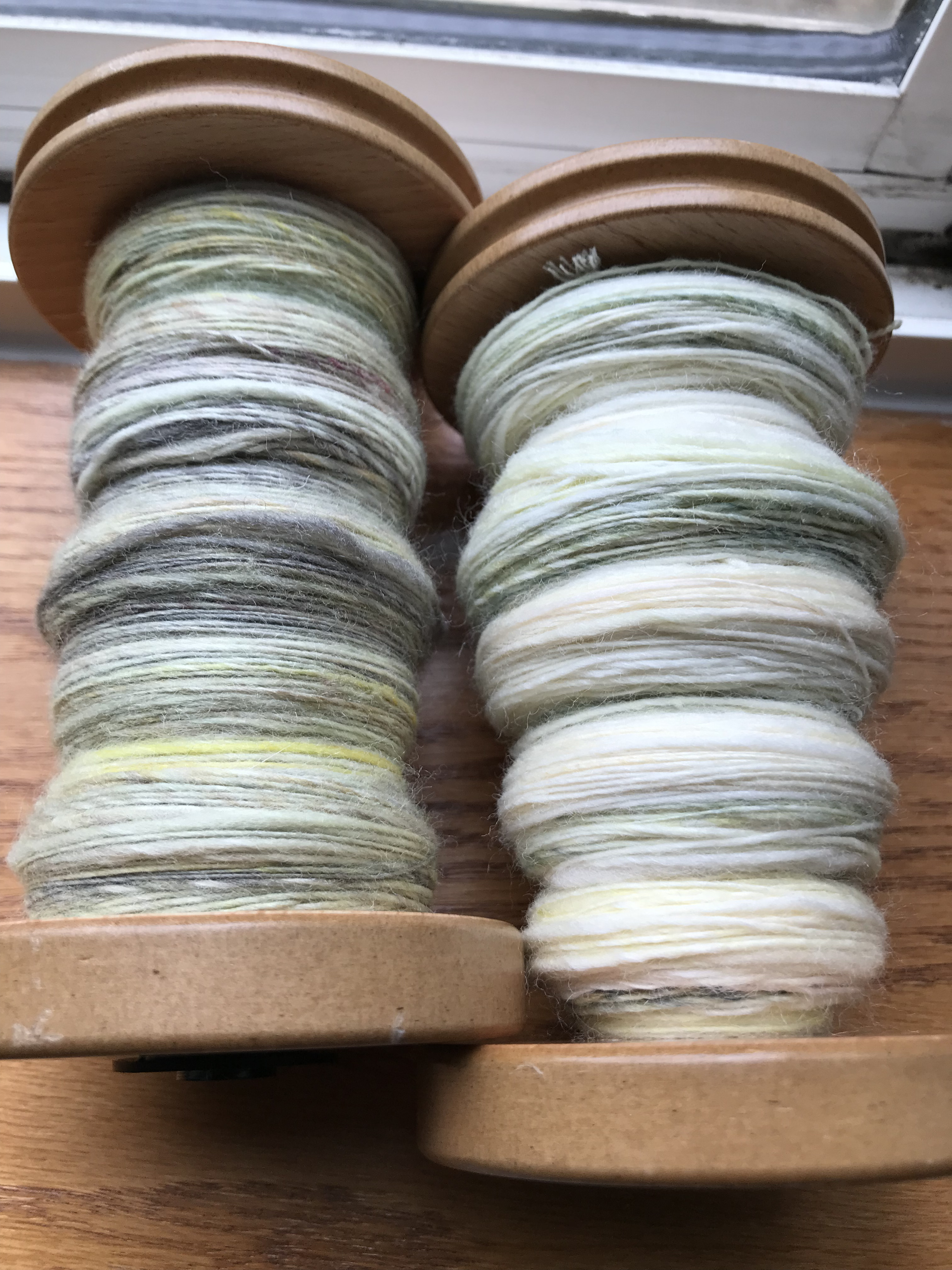
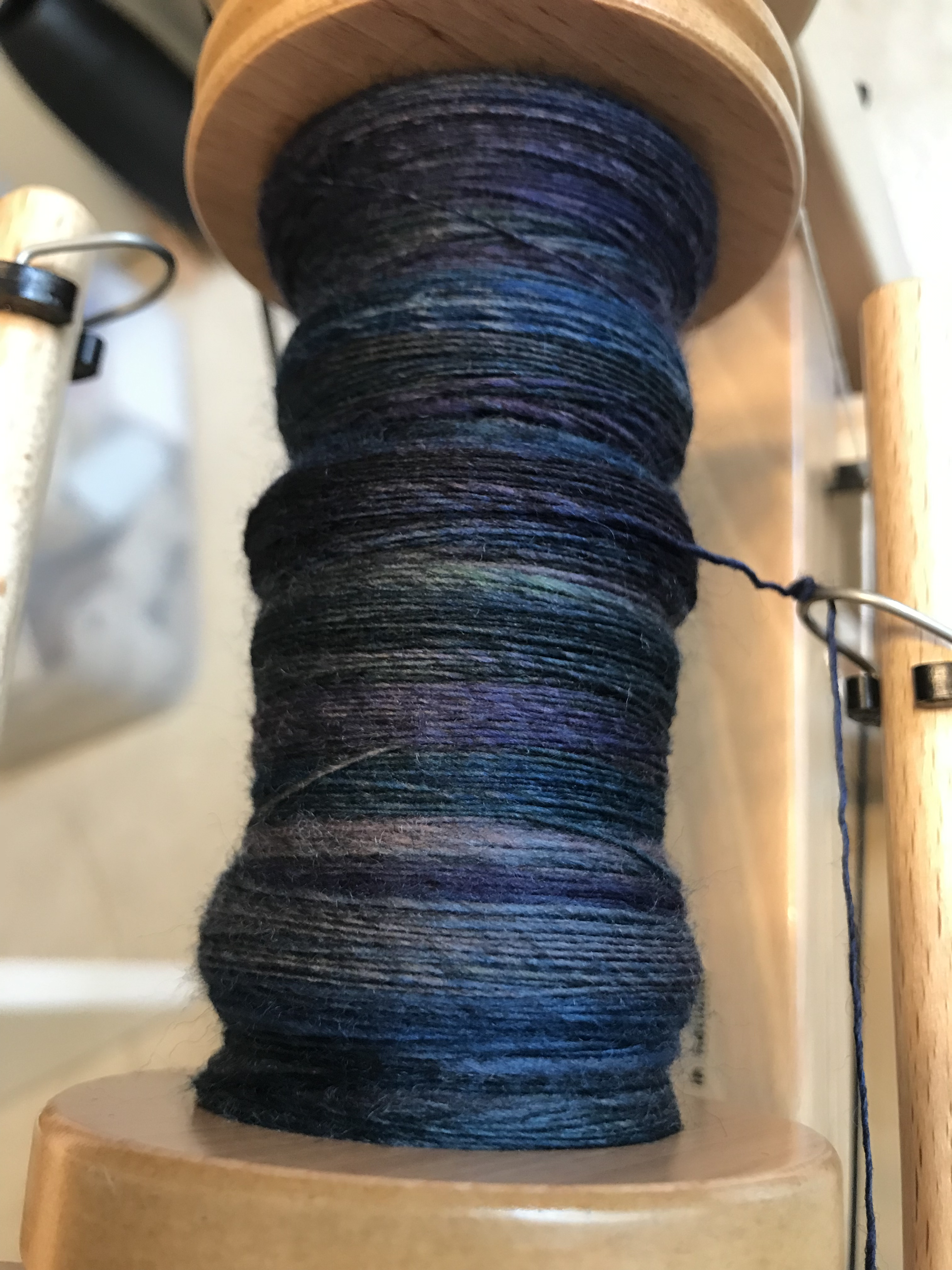
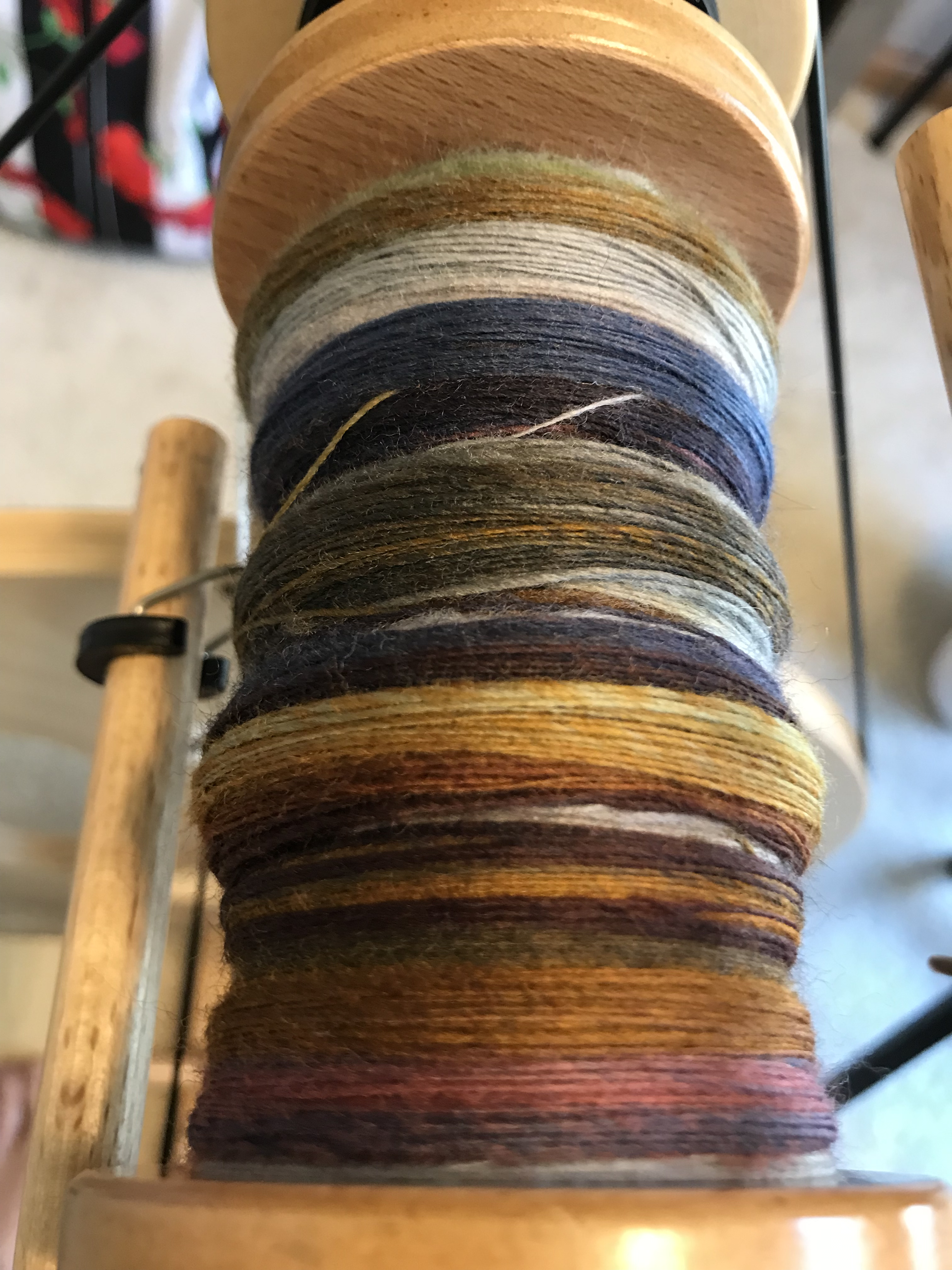
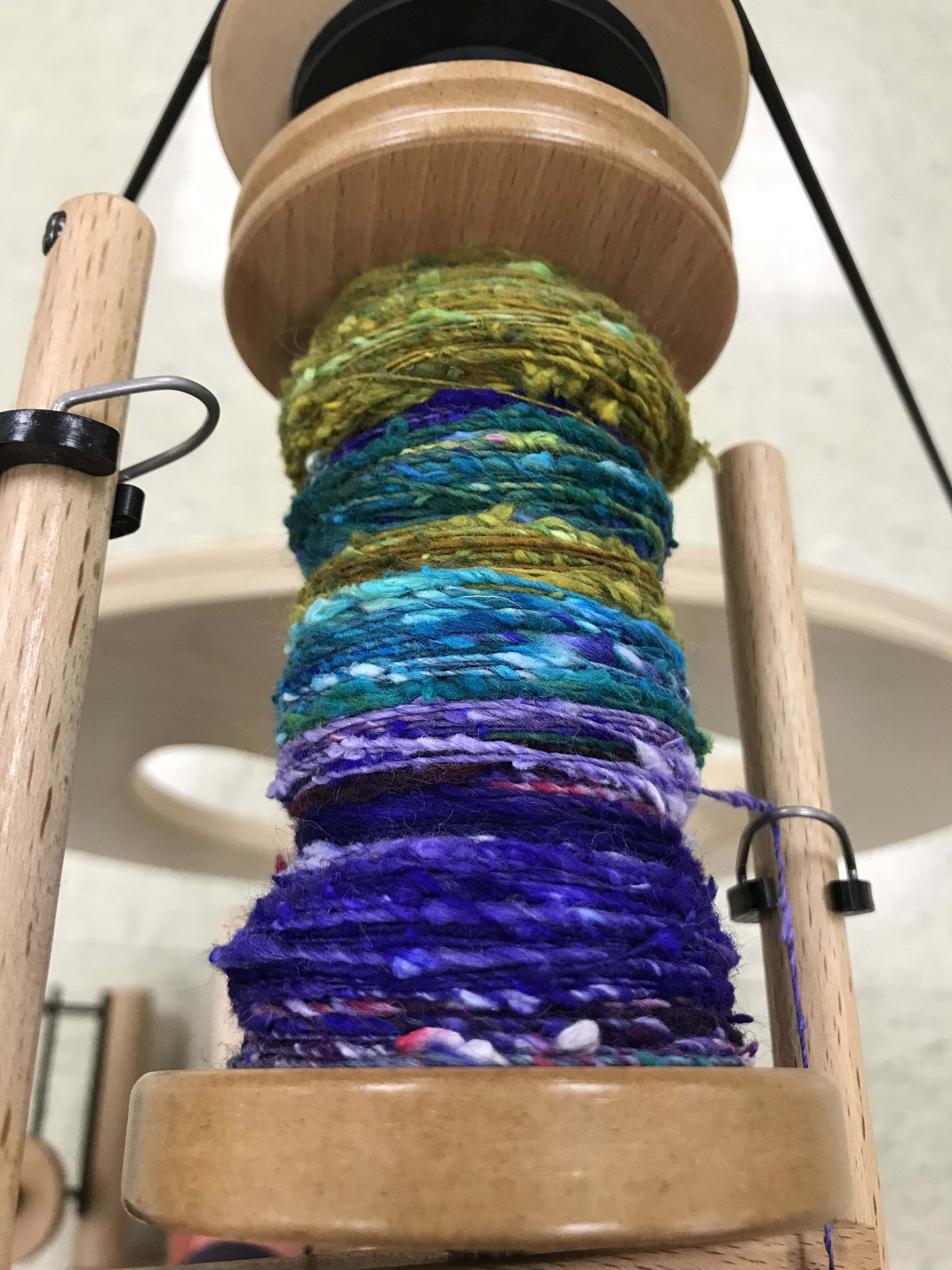
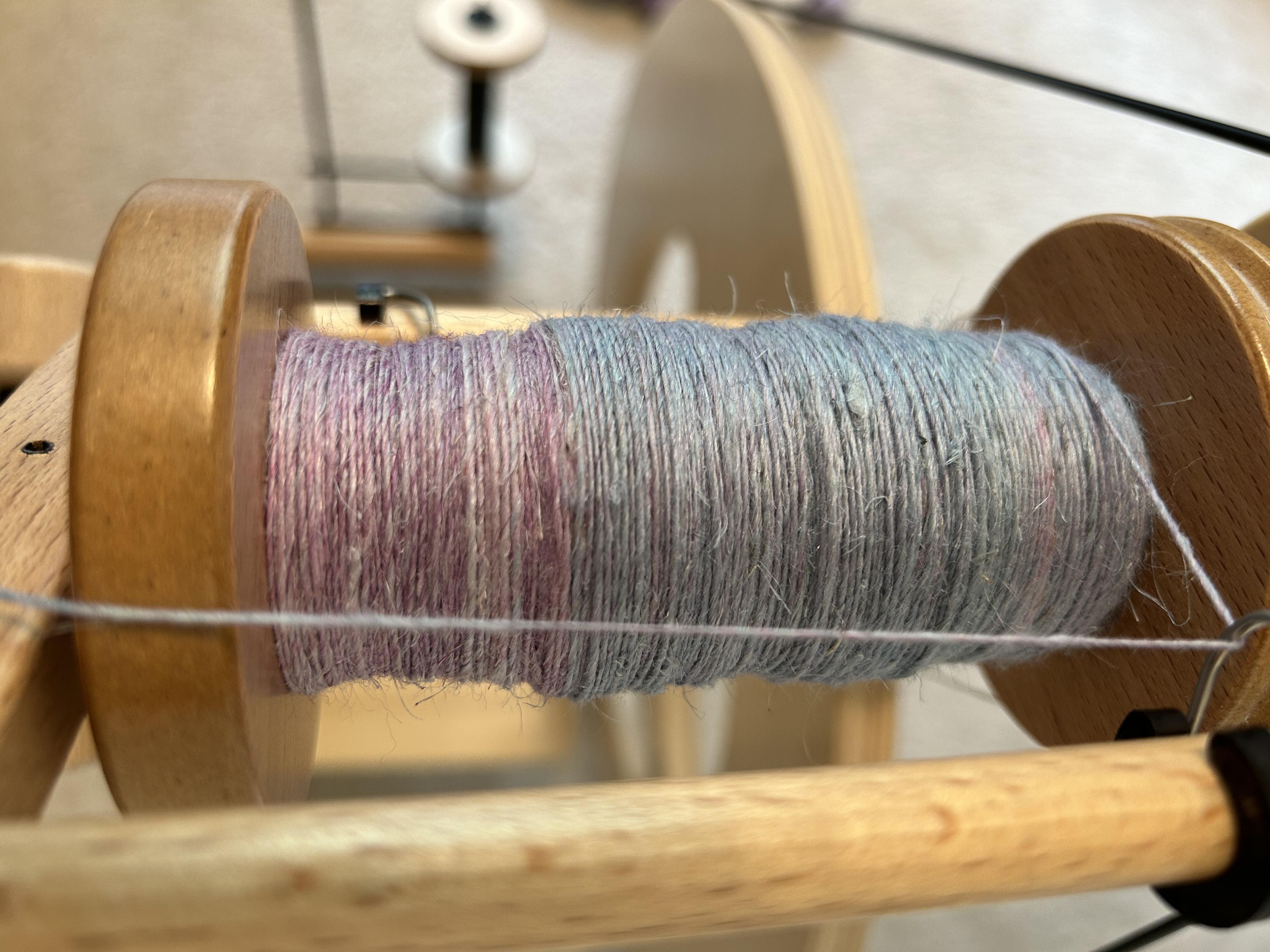

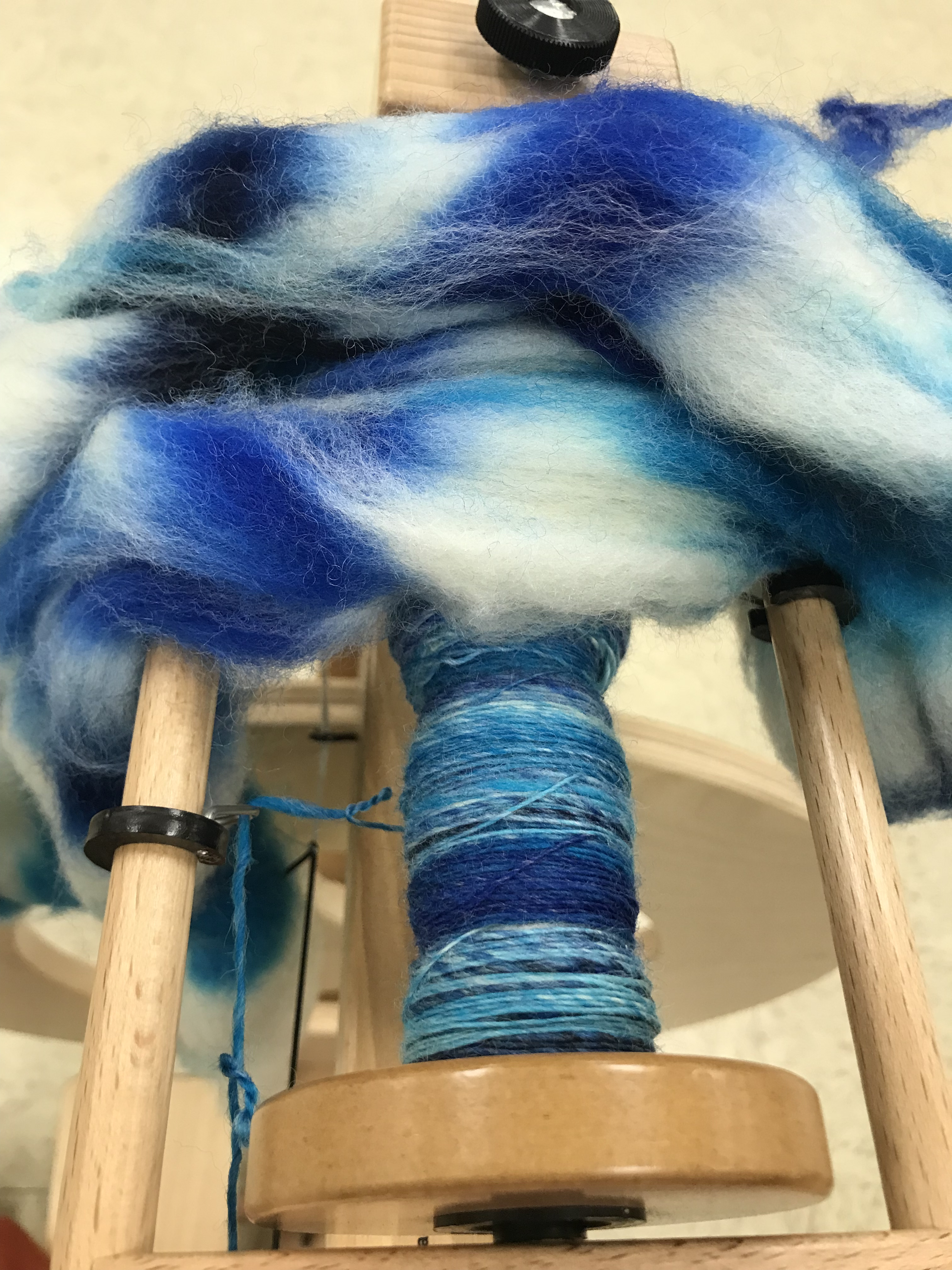
I thought this would be a good time to share some things that I have been spinning lately. I didn’t start spinning until after I had started this blog, so its not even in the name. And usually I wait until I have done a project with the yarn, knitting or weaving, to show off the spin. But my friend. Judy, recently showed me her pile of hand spun yarn. It is a work of art all its own. The making of the yarn is its own thing worthy of sharing. Disclaimer: Not all of this was spun in July, it is just yarn that I haven’t shown yet.
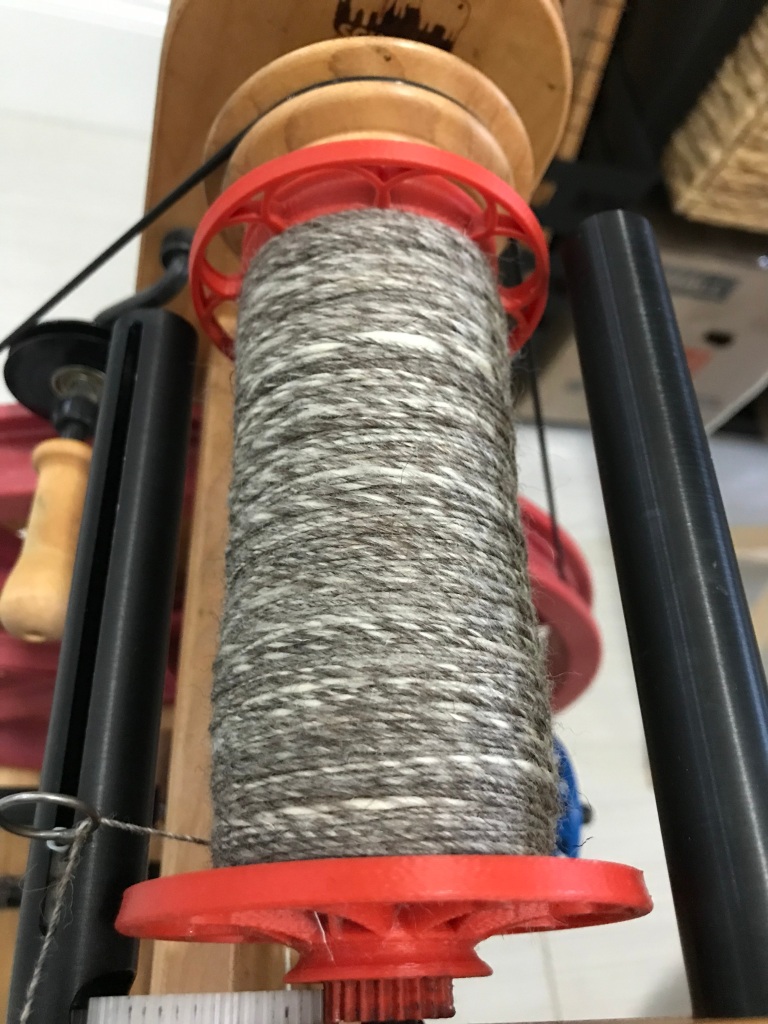
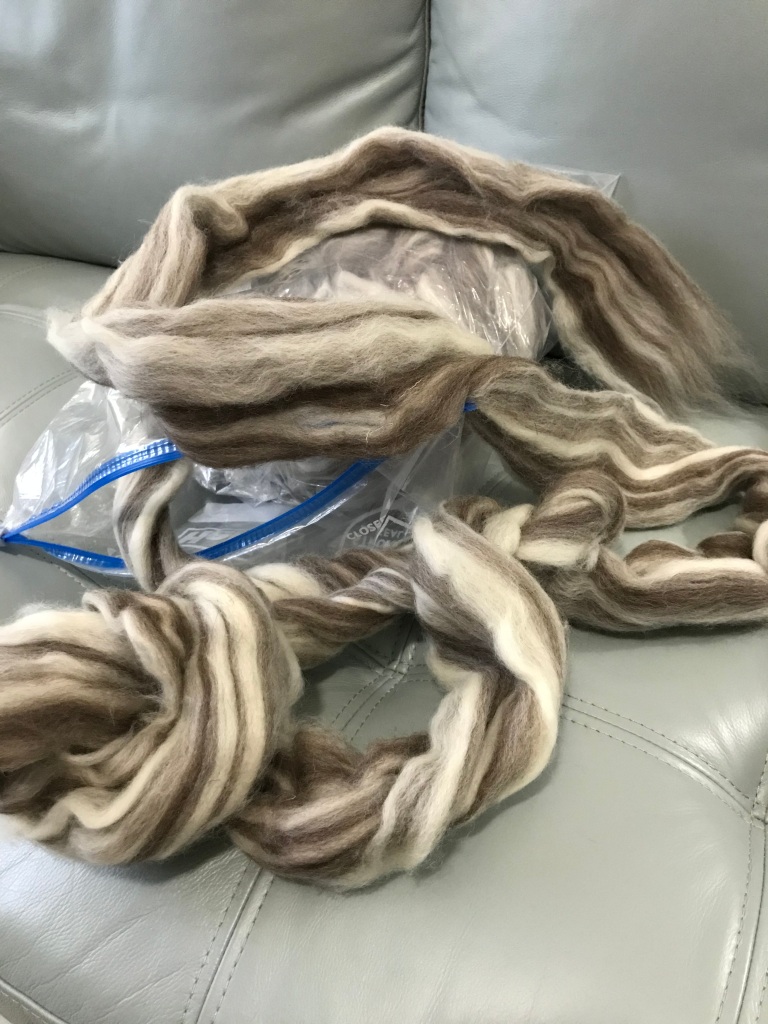
This fiber is natural color BLF from Fiber Garden in Blackriver Falls, WI. I get a lot of my fiber there and the owner, Deb Jones, taught me how to spin. I have some things in storage as we move around a bit so I don’t have any more information on this fiber, but I do know I have a big bag of it. It is fun and easy to spin and I plan to ply it on itself for a two-ply that will likely be worsted weight. It is very soft. I have no idea what I will do with it but I really like it.

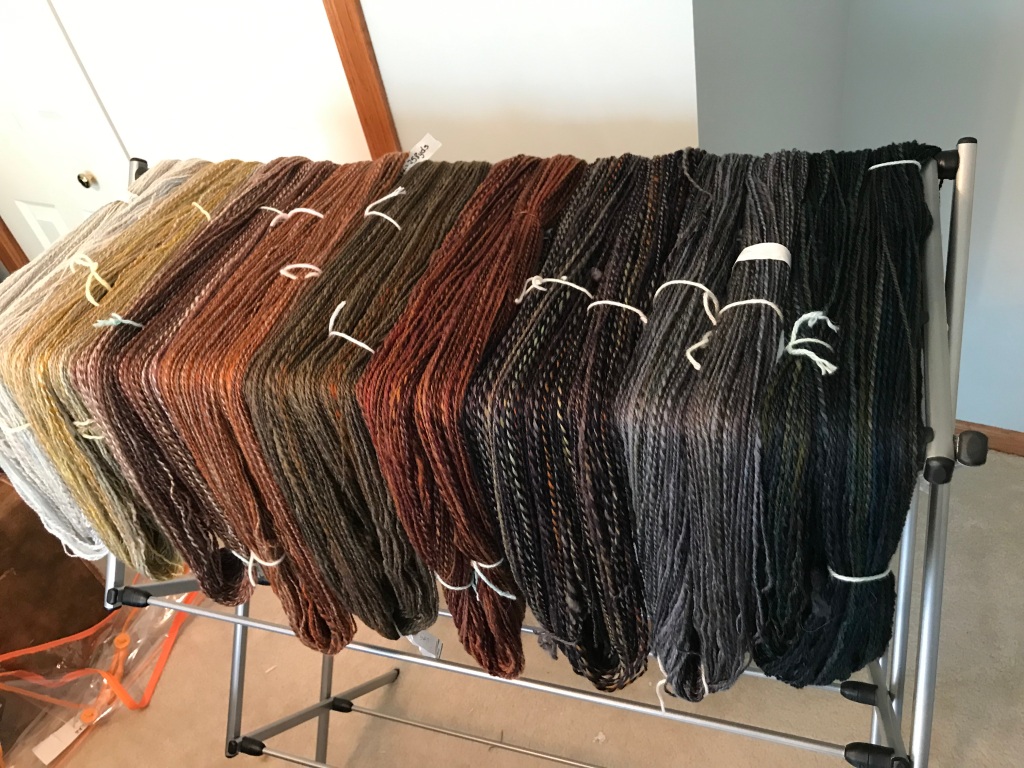
This fiber is from Inglenook Fibers, another company that I use a lot. It is hand dyed organic polwarth and is a dream to spin. This gradient contained nine braids, all inspired by an owl species. Together they make this beautiful gradient. I ordered two sets so I could spin two bobbins of each braid and ply them together. There is a least a sweater quantity and I intend to make a sweater for myself from them, hopefully before winter.
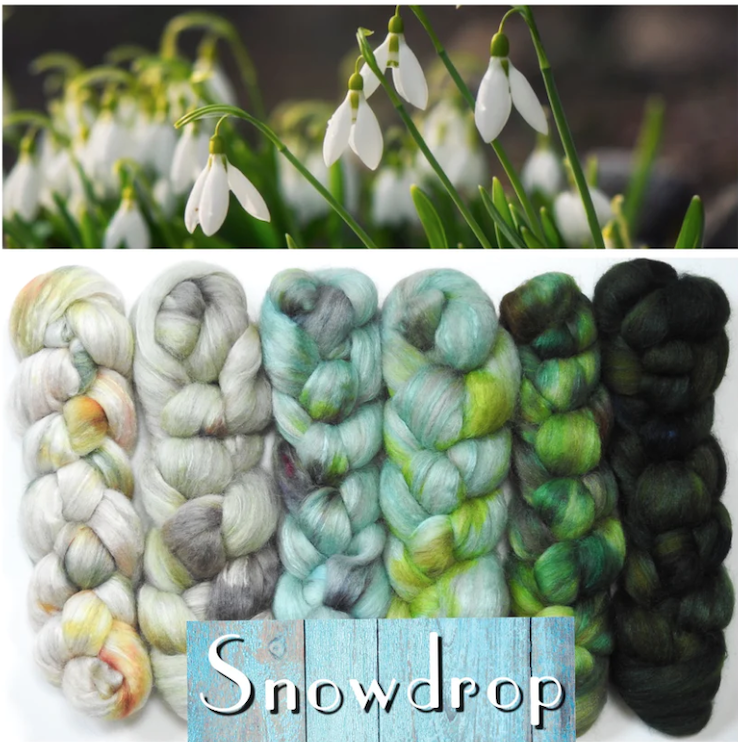
This fiber is also organic polwarth from Inglenook. The color was available in several other fiber blends but I love their polwarth. You have to be quick when they have a sale as the items disappear in a flash. Best to get on their mailing list so you know when the items will be for sale.

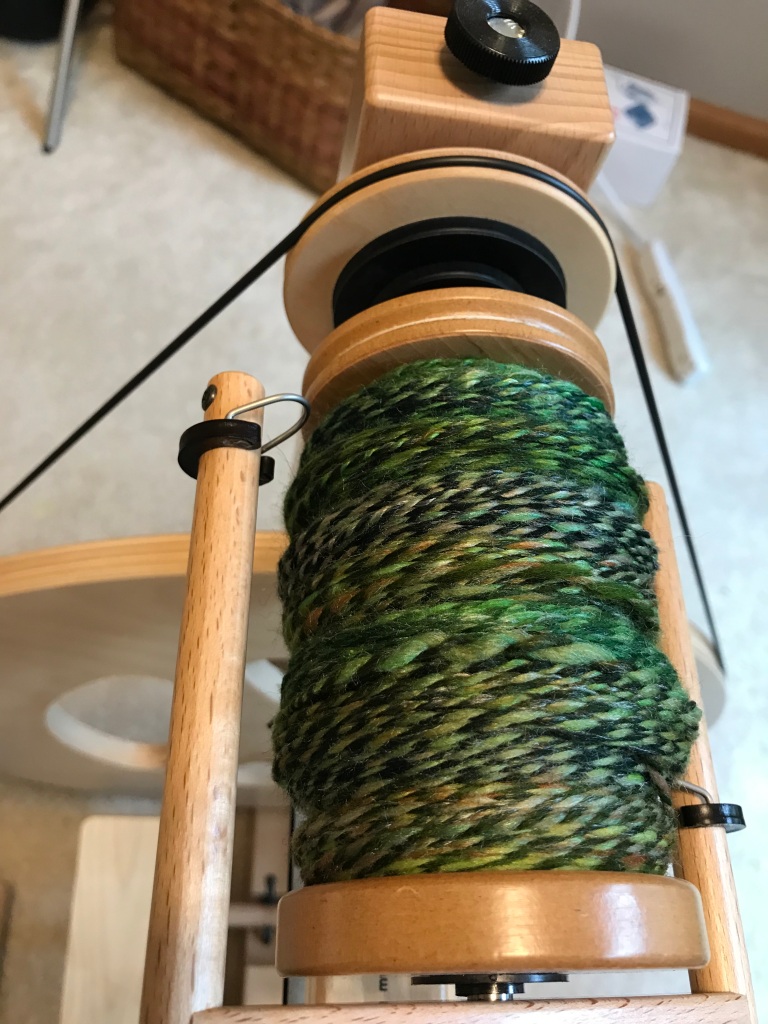
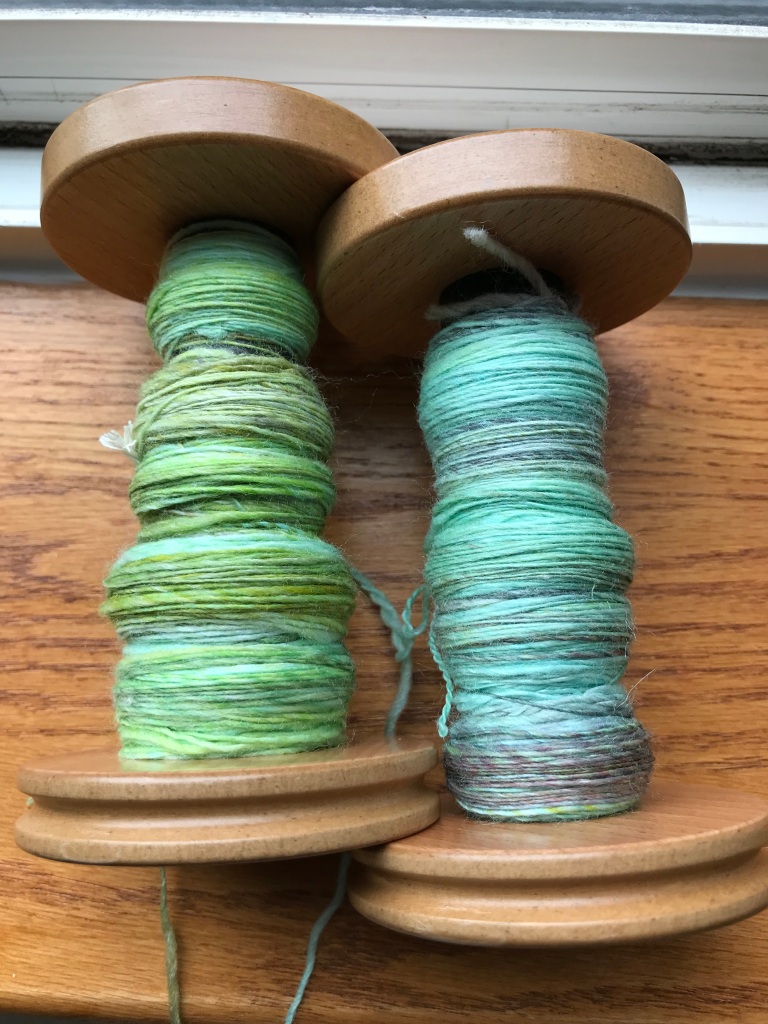
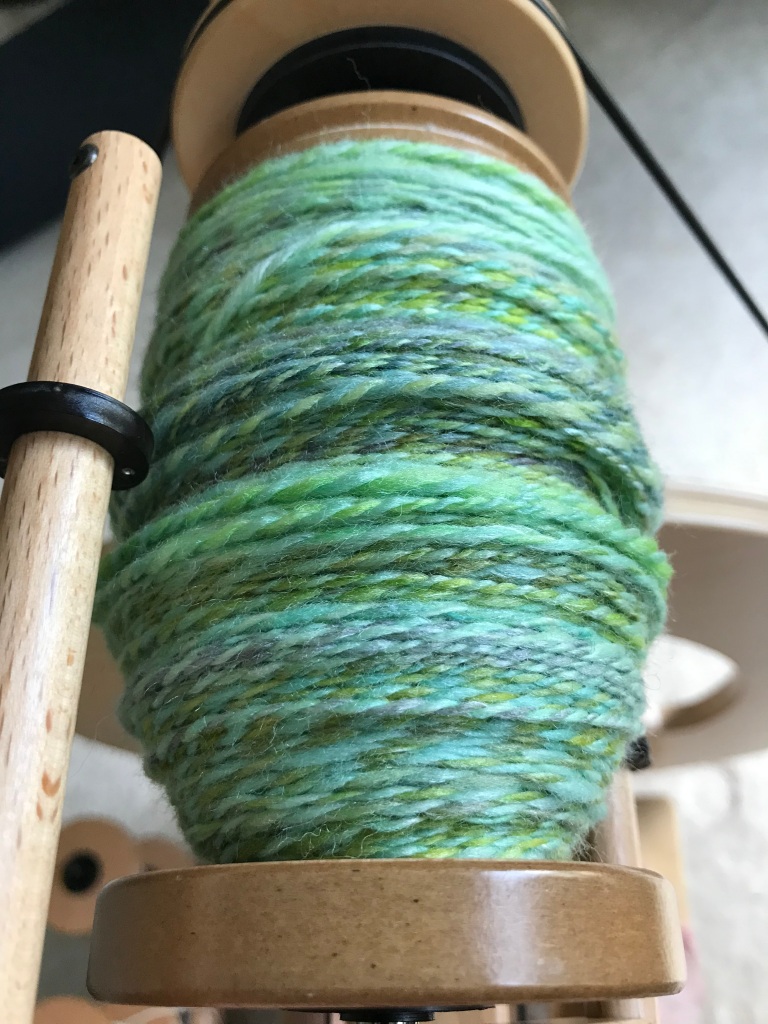
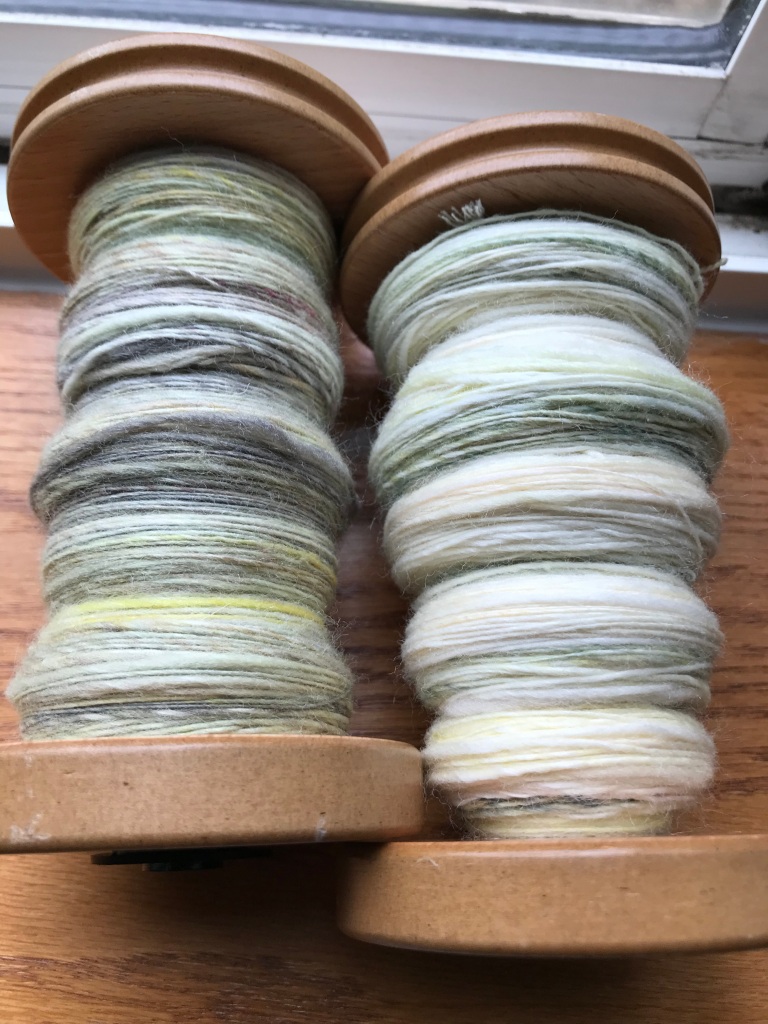
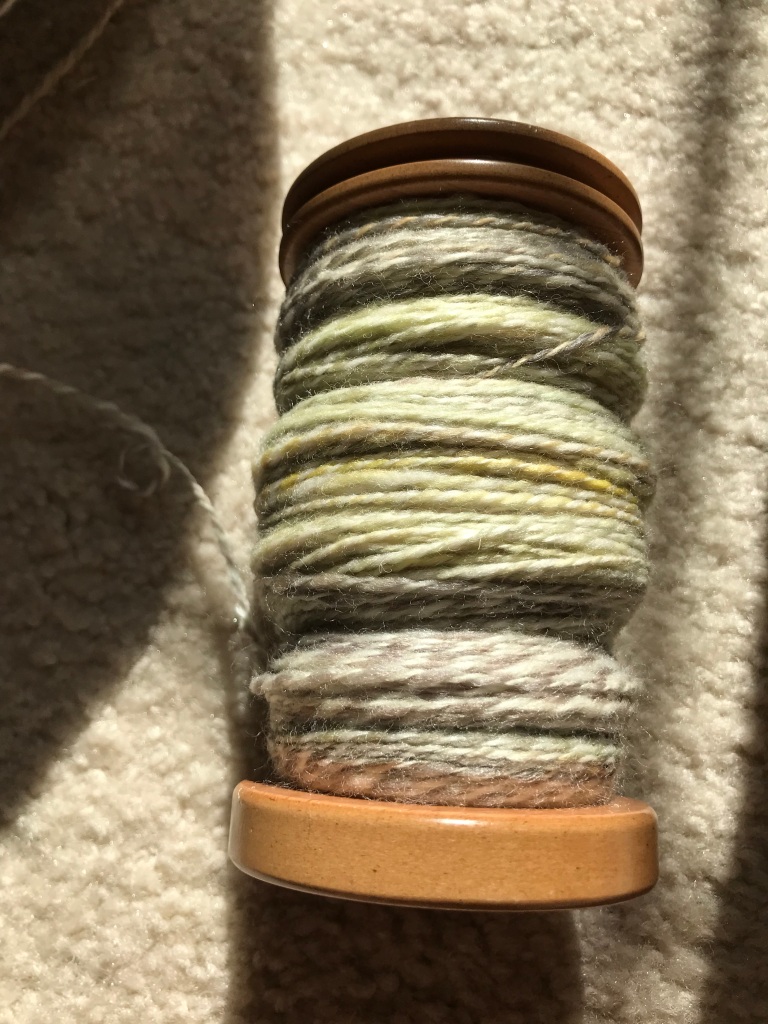
This gradient had six braids. I spun and plied the two darkest together, the two lightest together, and the two middles together. I hated to lose the individual colors, so when it came time to order the owls in the previous pictures, I got two sets. In retrospect I wish I had divided these braids in half and kept all six colors. I learn something each time I spin.
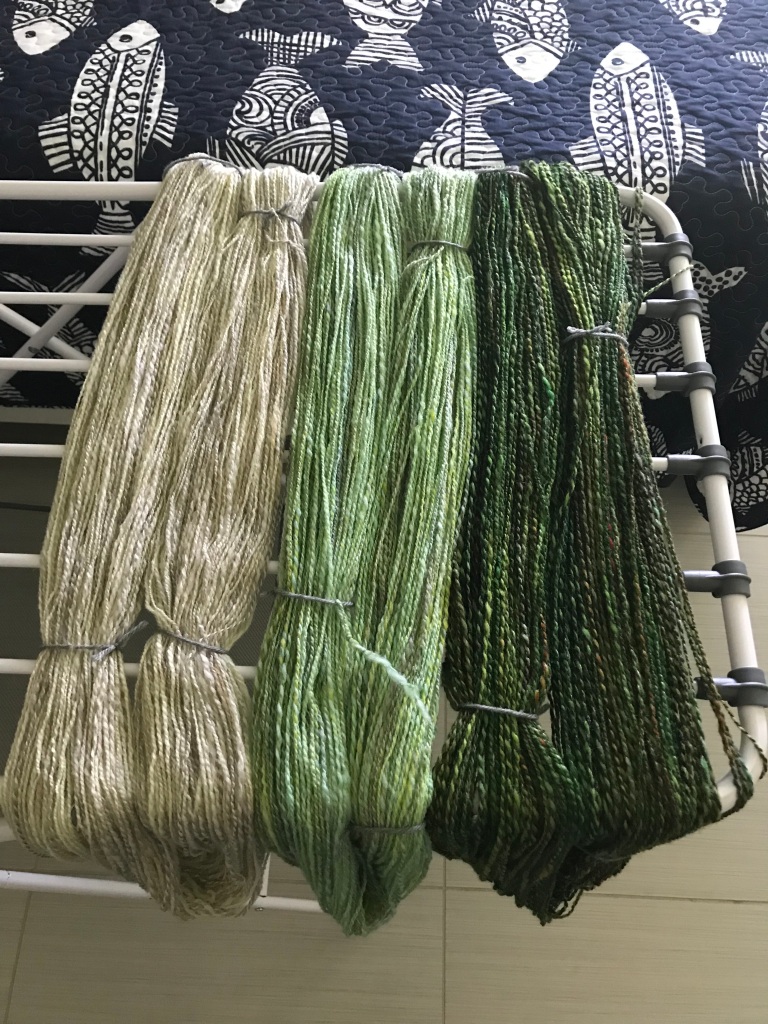
I do like the three colors but I do not know what I will do with them.
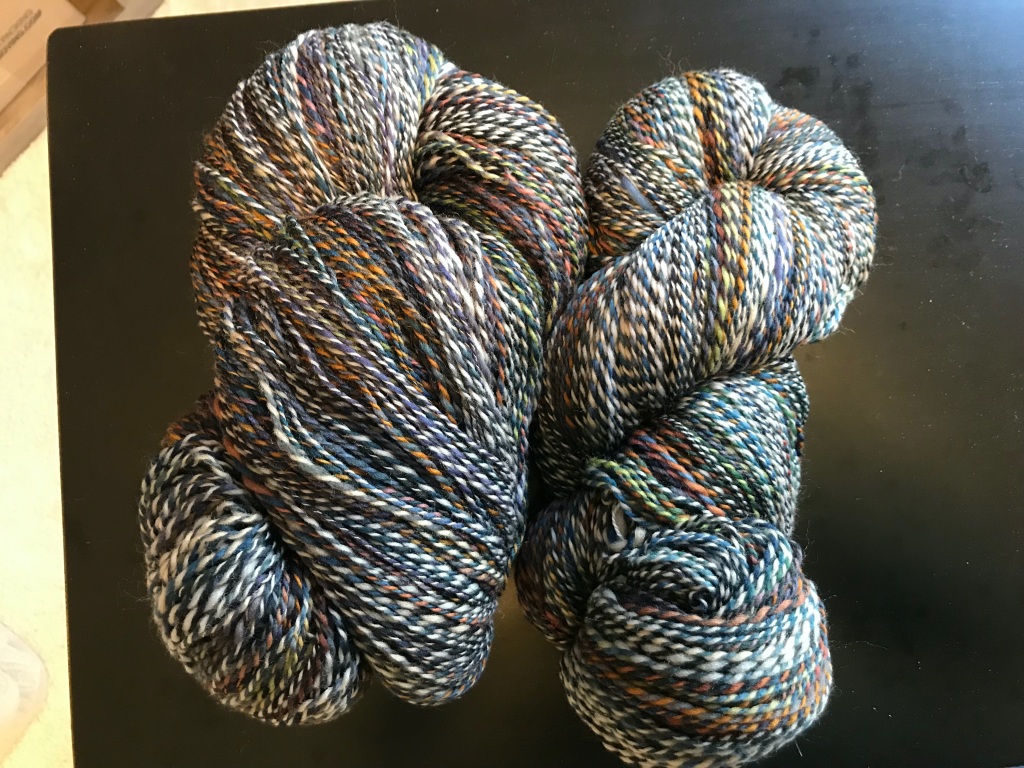
This is also Inglenook organic polwarth. I have quite a bit. Its hard to skip an event there even if it piles up a bit. This spin is actually a ply of two completely separate and different color ways.
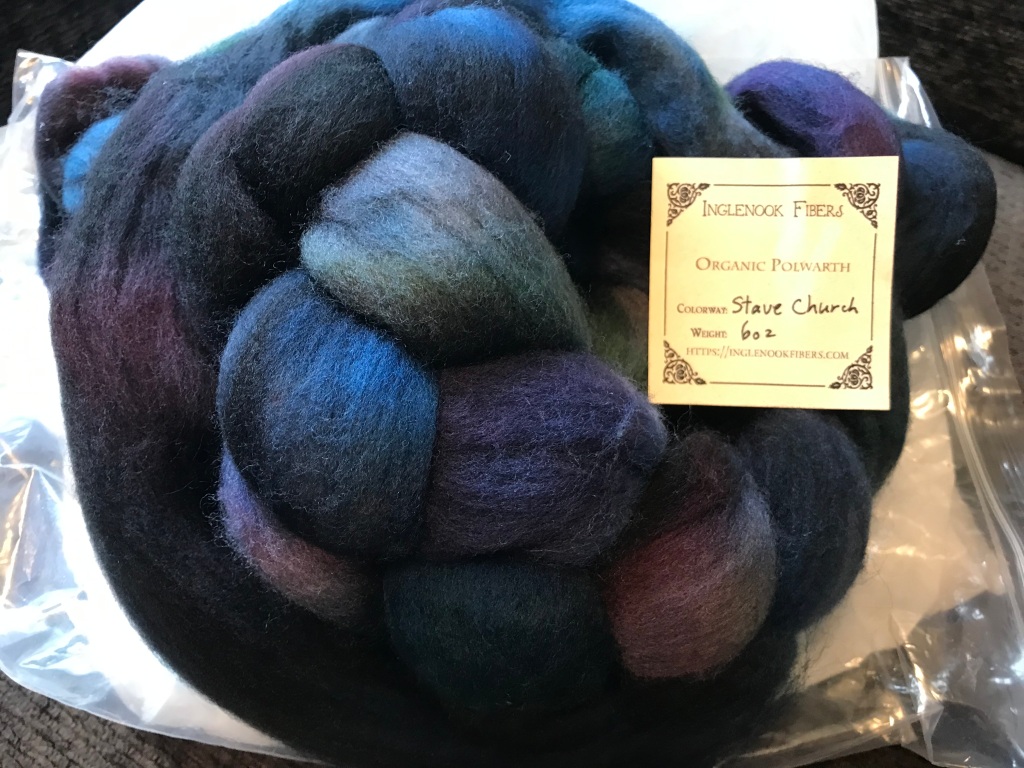

This is a color way called Stave Church. It is dark with blues, purples, and greens.
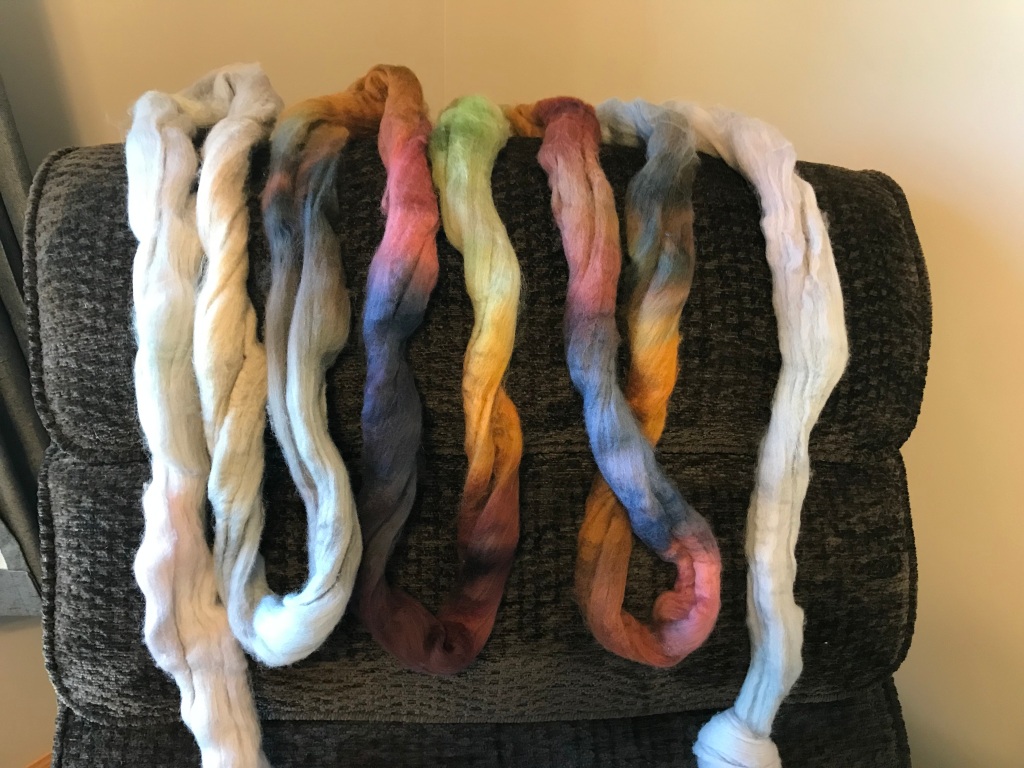
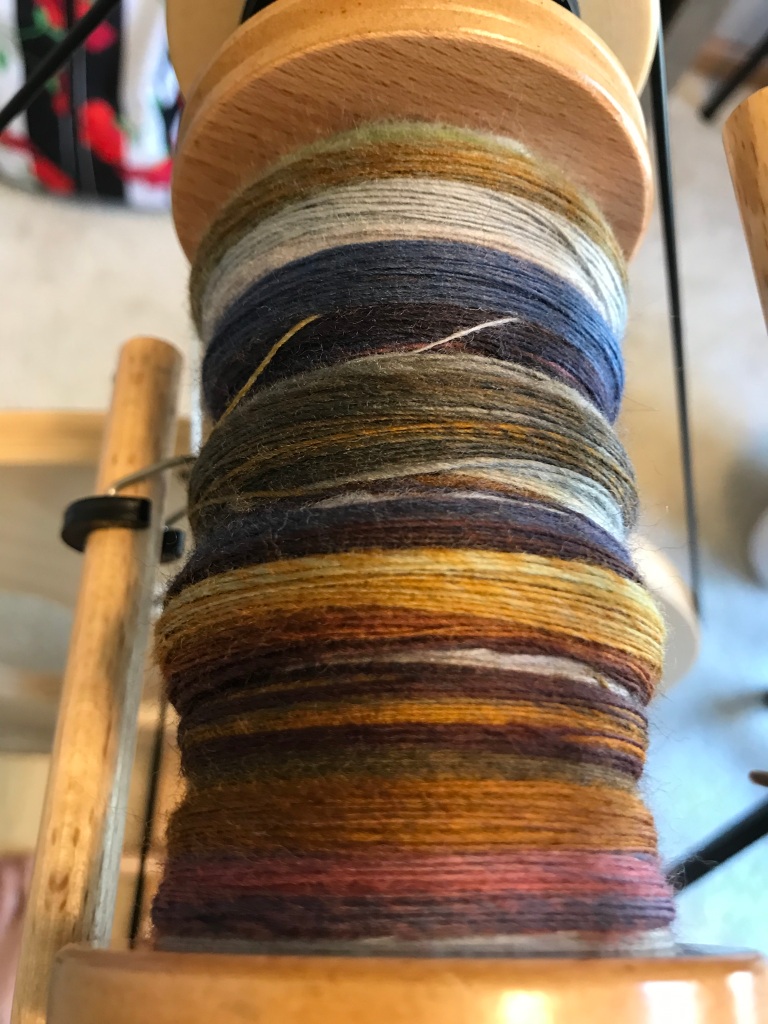
This is the second colorway called winter wren. The braid is about 1/3 light gray on each end. The colors are all in the middle 1/3. I stripped this braid thin and spun it from end to end several times over. That created long gray sections separating the color sections.
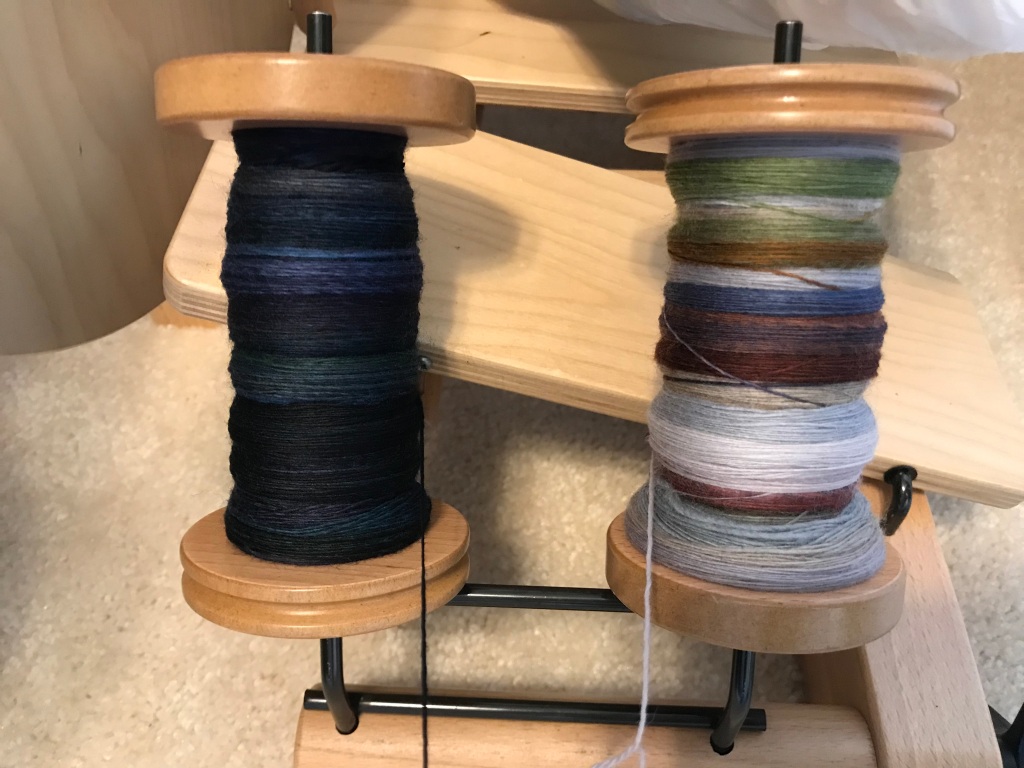
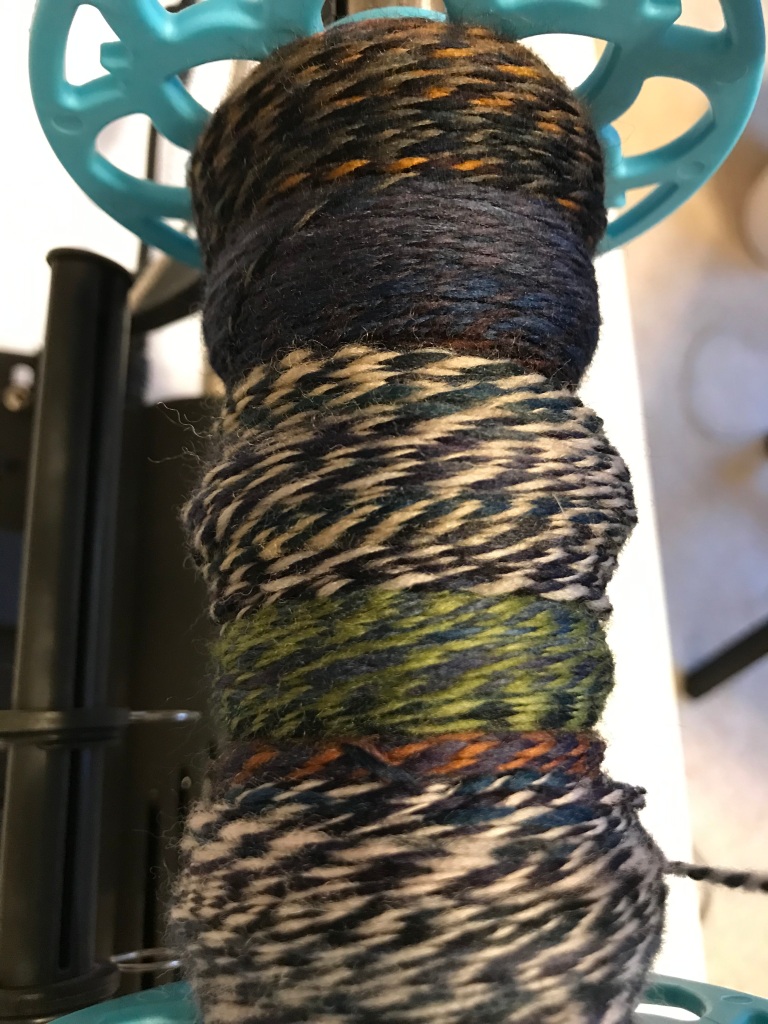
These are the two bobbins, side by side, and the plied yarn.
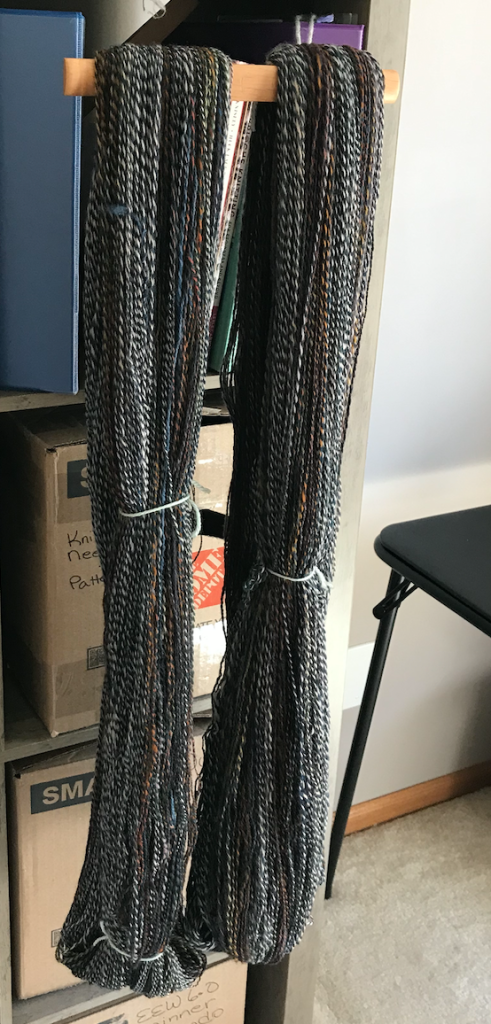
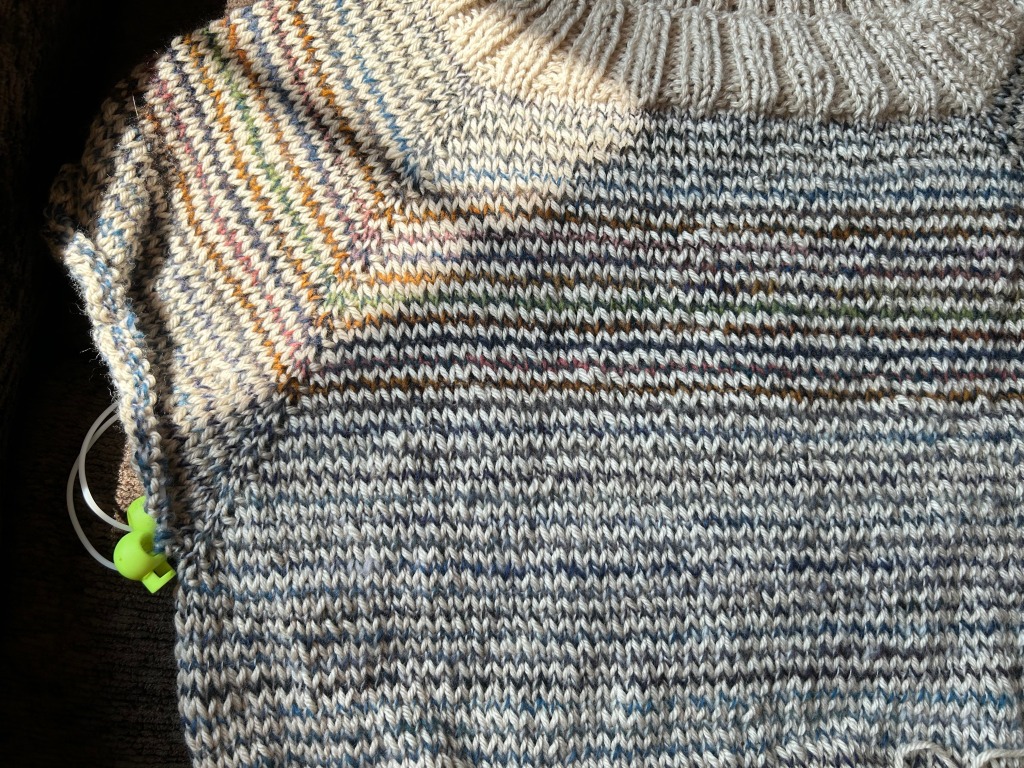
I am currently knitting a raglan sweater with this yarn alternating rows with a light colored yarn. You can definitely see the “wren” colors in the skeins of yarn and in the sweater. It is turning out just as I hoped.

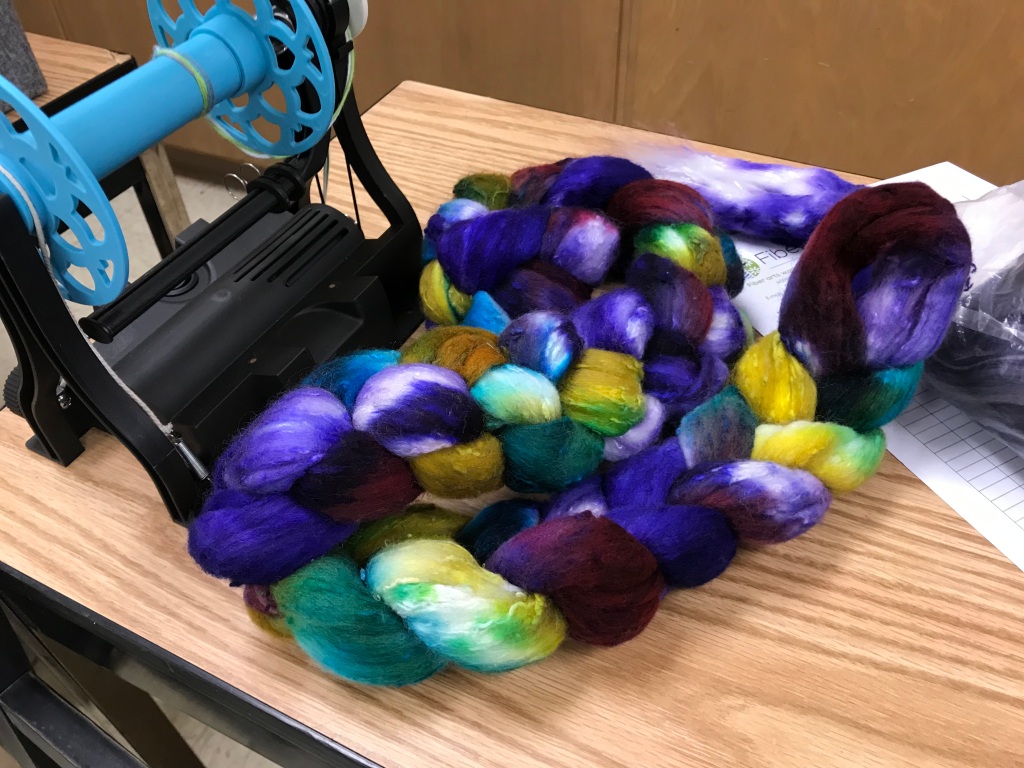
You may notice that this yarn from Inglenook is not the same fiber I usually buy (polwarth) and not really the same colors. That is because I didn’t choose it. But it may be my favorite ever and it certainly will always have a place in my heart. After hurricane Ian, we didn’t have any power, internet, or cell phone. Occasionally a message would get sent in the night, but I knew I would not be able to participate in the upcoming sale. So I sent an SOS to my friend, Vickie, and told her to get me something, anything! It was a very stressful time and this fiber really really cheered me up.
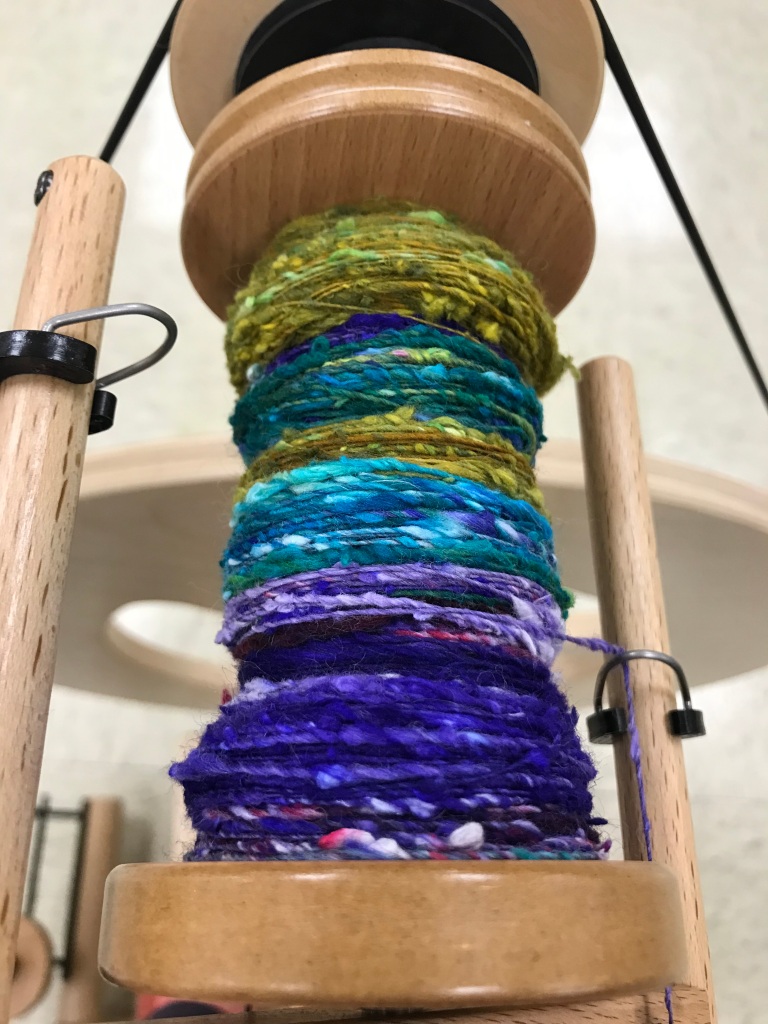
It spins very thin, except for the large silk slubs. The colors were so pretty I didn’t want to ply it with another color or even on itself. I considered chain plying to preserve the colors but didn’t want to make a three-ply.
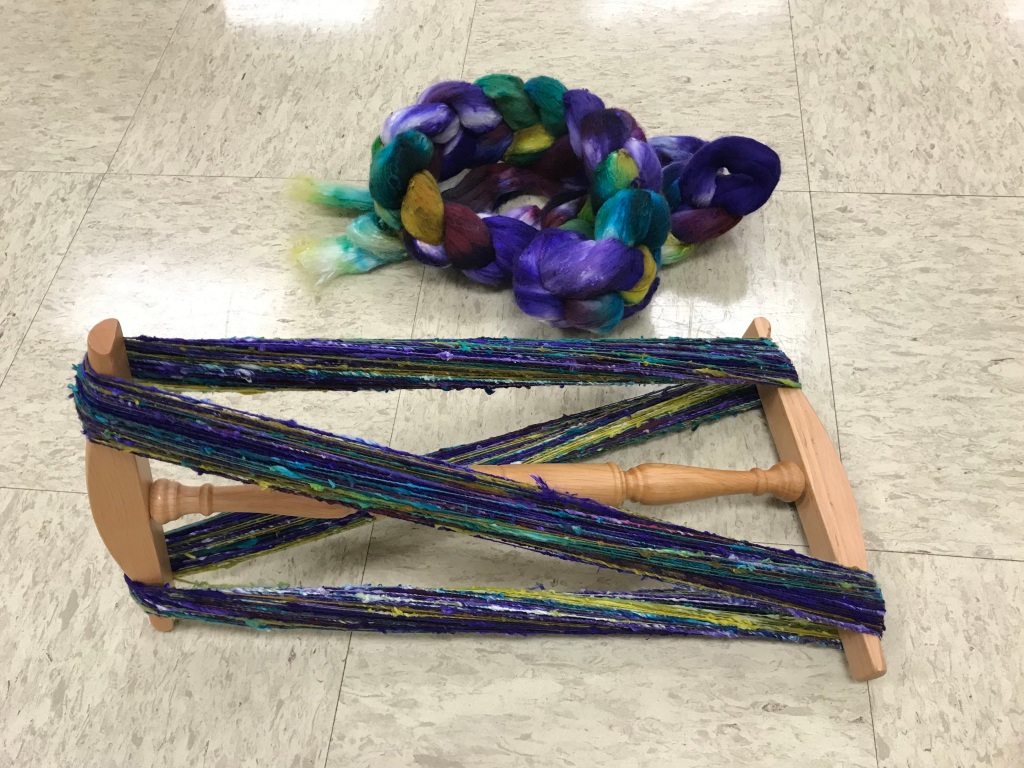
After some consideration, I decided to leave it a single for weaving. I read about singles and learned that you can spin them tightly and then felt them a bit in the washing process. Basically you do everything that you usually DON’T do to yarn, beat it up, change the temperature, dry it under tension.
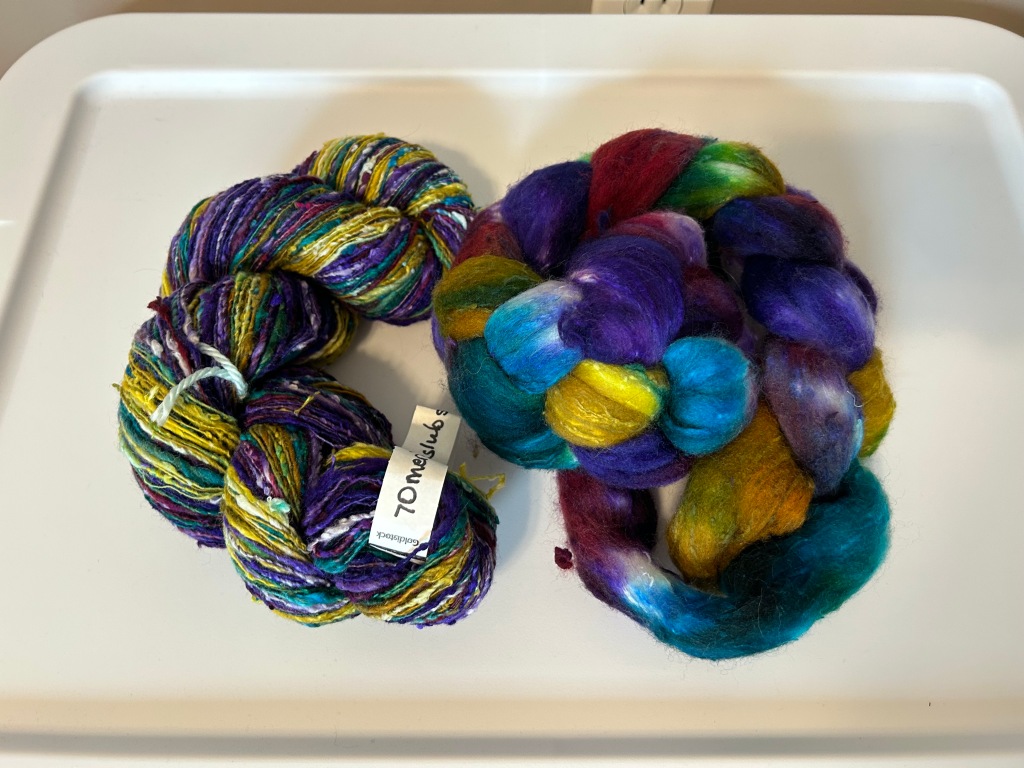
It worked well. The yarn seems very stable and strong. I think I will use it to weave decorative pillows.
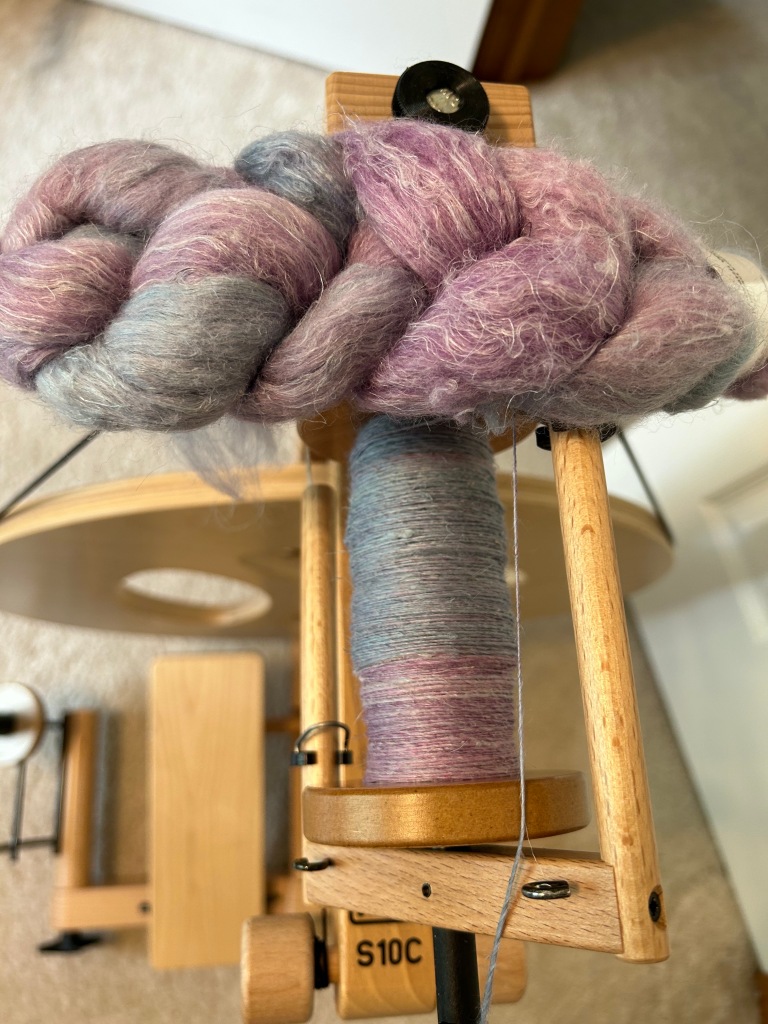
This is interesting fiber. I bought it at a spinning event just before the pandemic and only recently decided to try it.
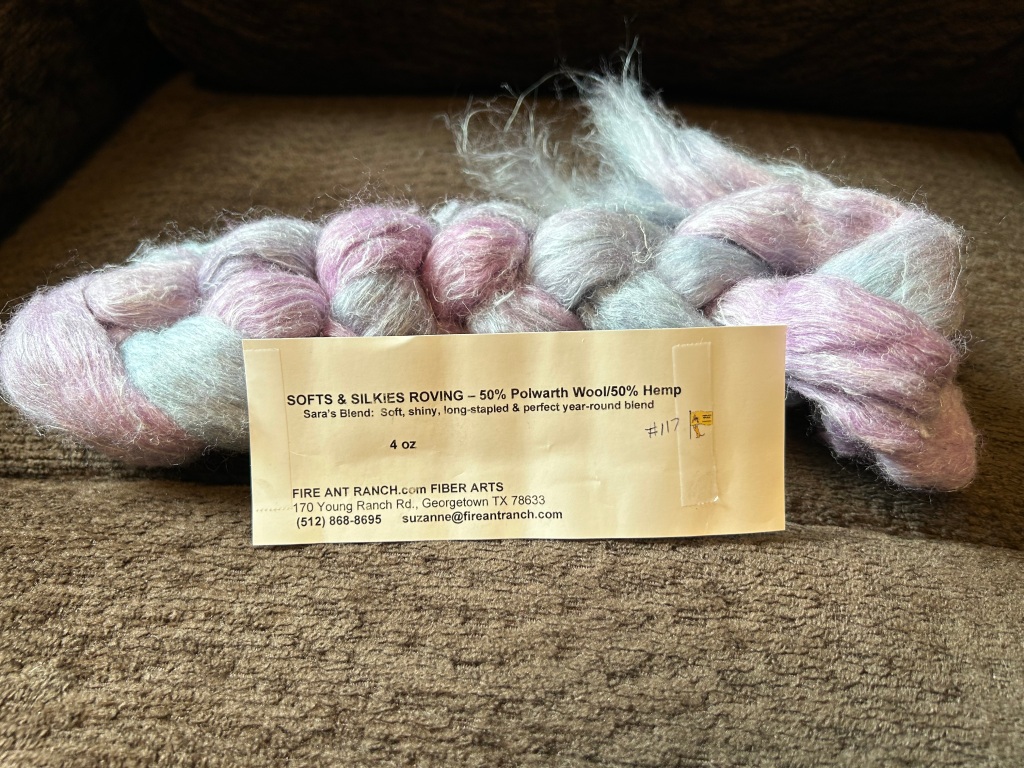
It is 50% polwarth and 50% hemp. I bought some 100% hemp that same day and that stuff was like twine, hard on my hands and very scratchy. But the blend was remarkably soft. It isn’t “next to skin” soft but its not bad.
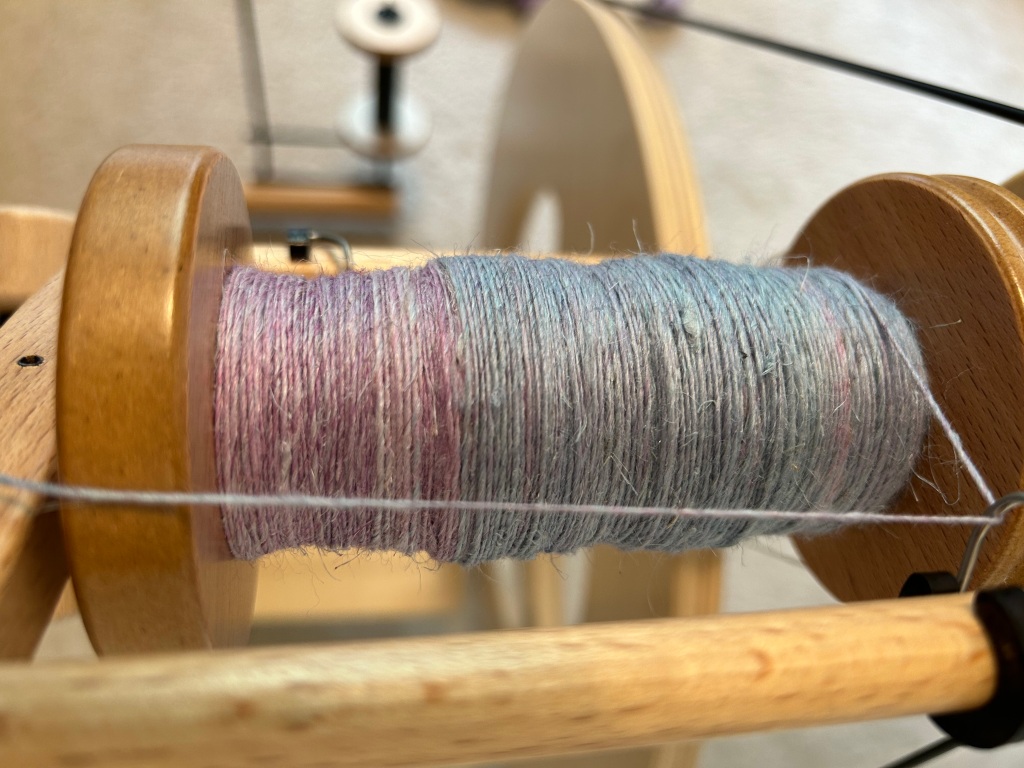
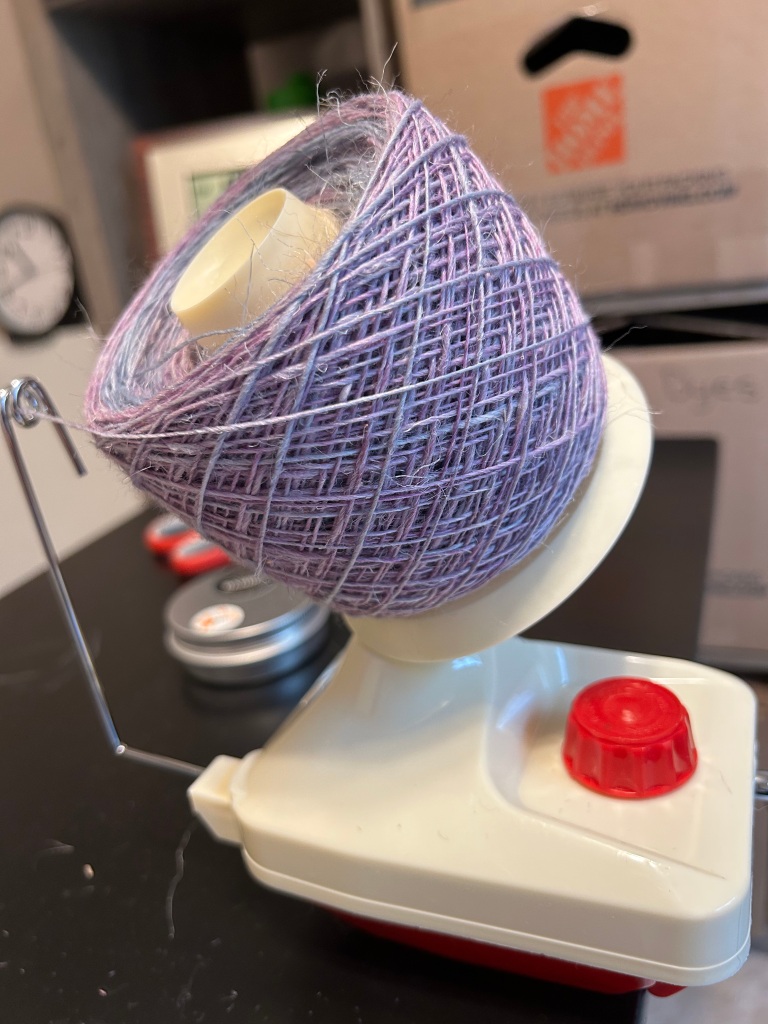
I think I will use it as a single weaving decorative pillows. But I haven’t made up my mind yet, so I haven’t plied it or washed it yet, instead deciding to wind it into a cake and save it.
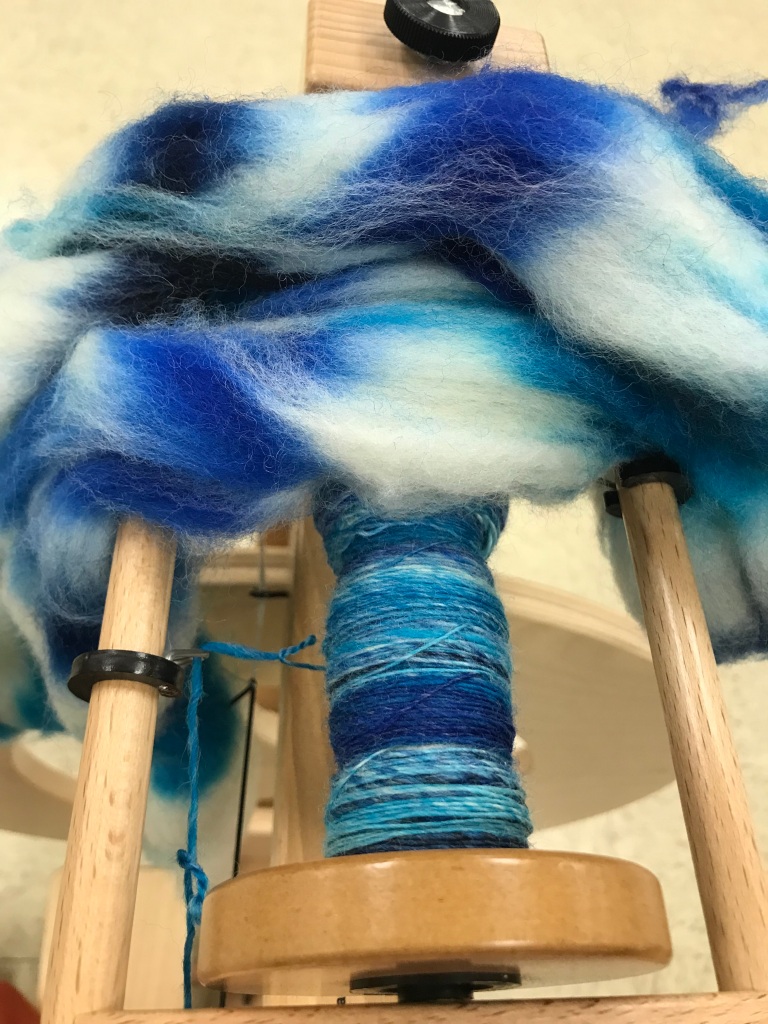
This is some more fiber that has been around since before the pandemic. It is Superwash BFL from Longdog Handspun and the color is Blue Trio.
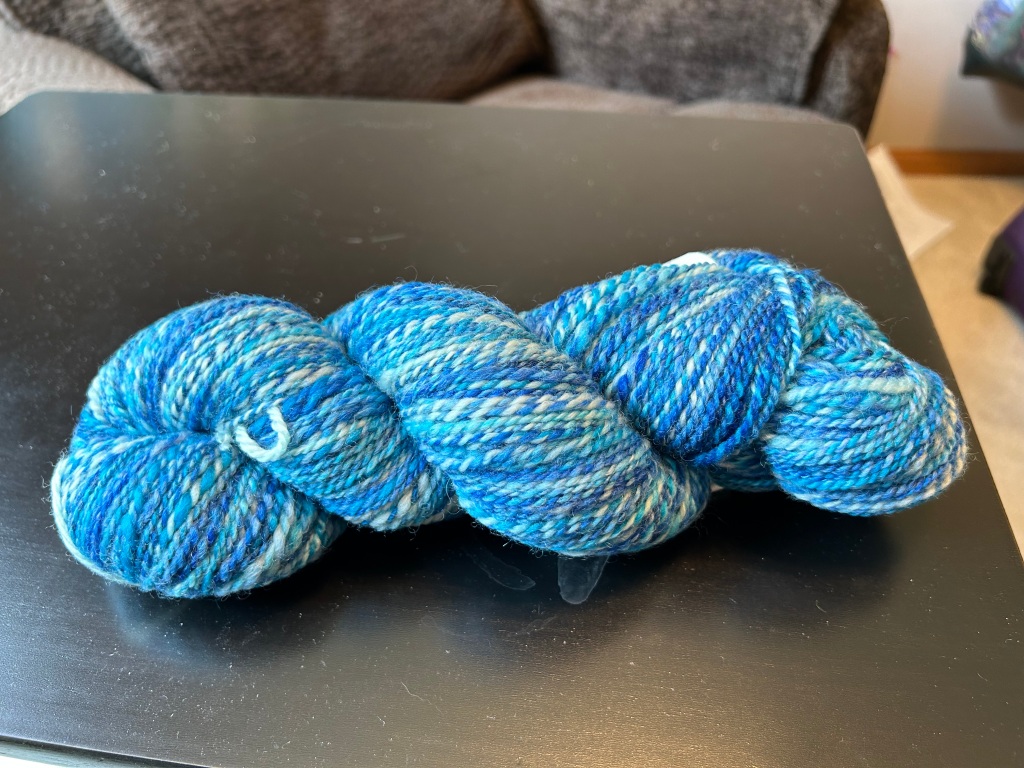
It spun up like a dream and I plied it on itself. I don’t know what I will do with it but it will be a pretty skein in the pile.
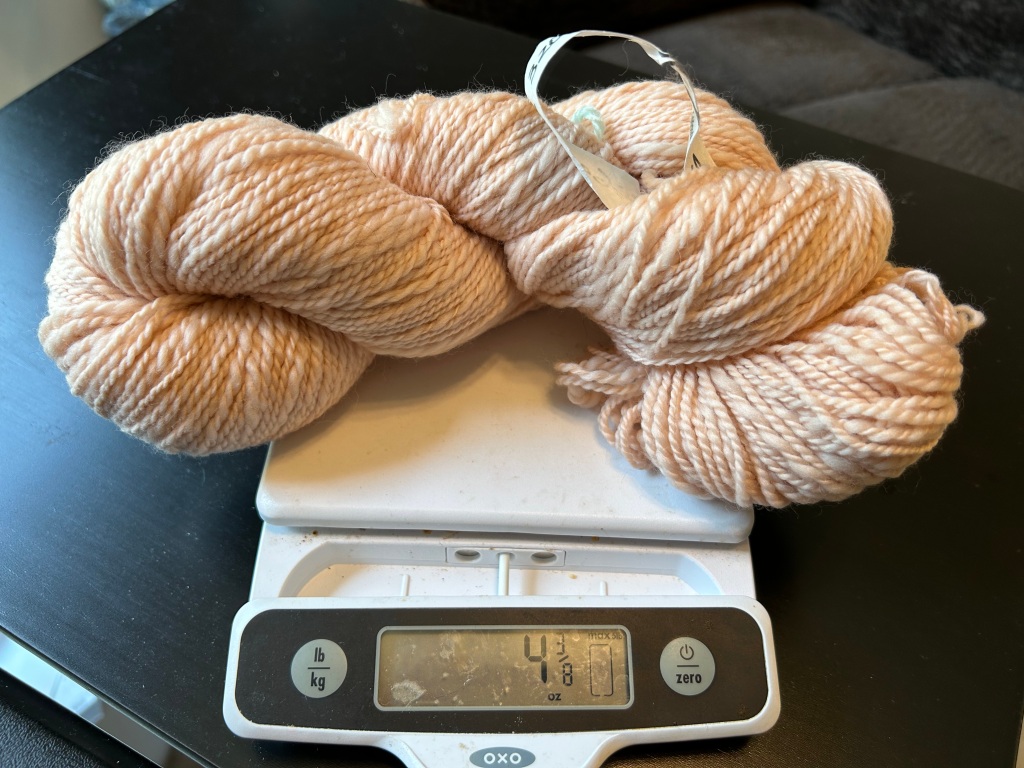
This is superfine merino in color Eggshell from Fiber Garden. I tried small amount to see if I liked the fiber and I do. I will order more colors. The is 4 3/8 ounces and 320 yards of two ply. It feels lovely.
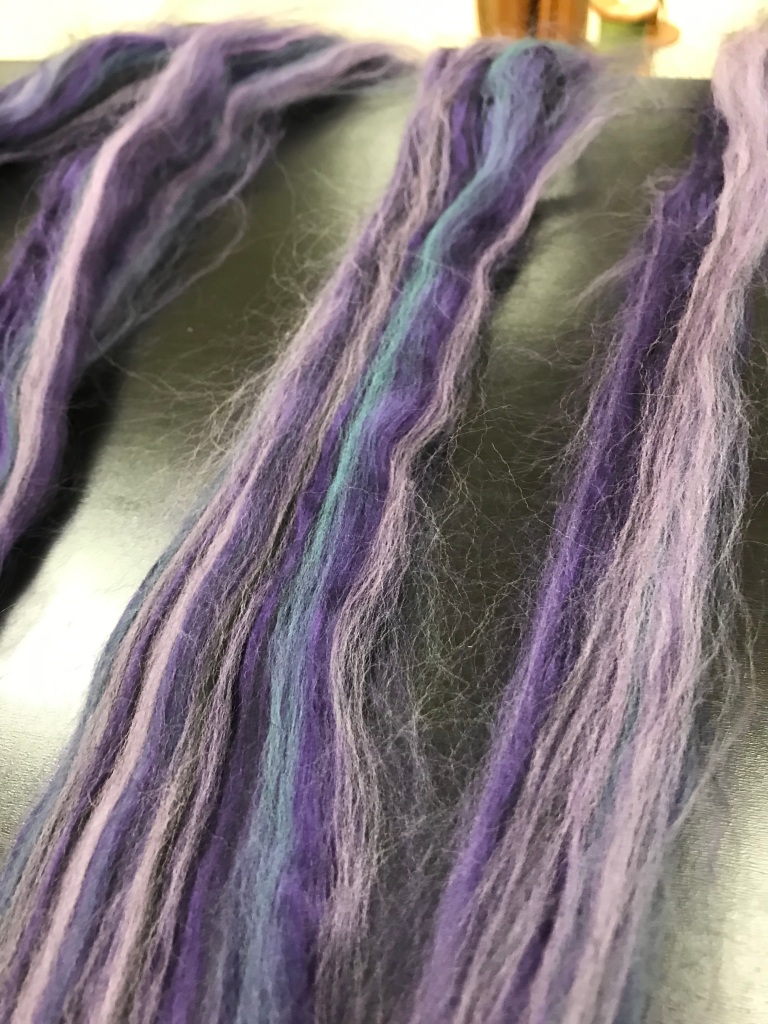
Last, but not least, Zyma’s New Groove. I got this from Fiber Garden and she got it from World of Wool. Apparently, the company sometimes lets the workers make their own blend and then names it for them. This is 20% merino, 40% superfine merino, 20% llama, and 20% mulberry silk. I like the amount of blending that was done.
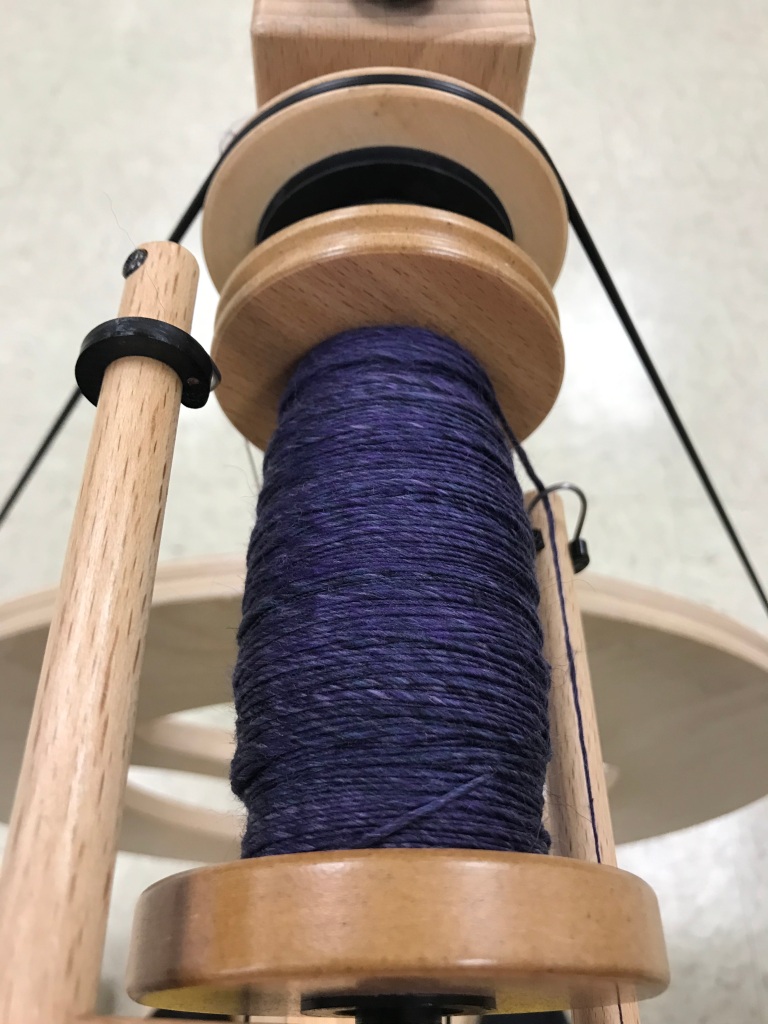
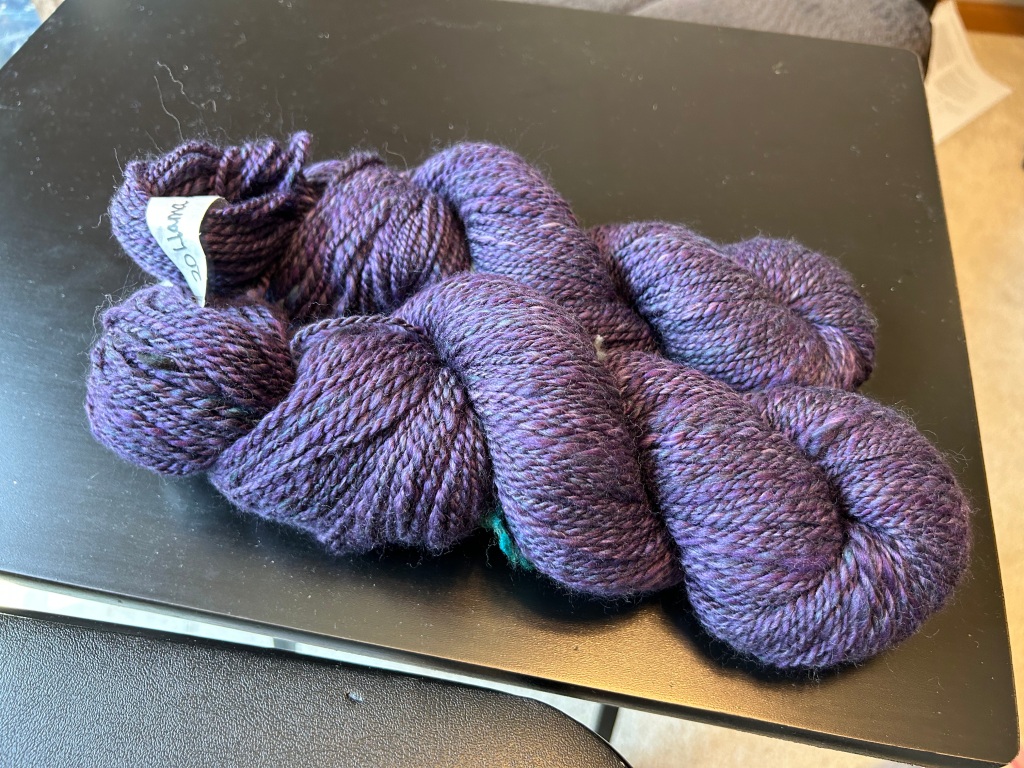
I got 8 oz. so I have two skeins. This was the only color for this blend, but it is so nice that I’m hopeful they will continue to make it and add more colors.
I hope you liked seeing the things I’ve been spinning and that you enjoyed hearing about Le Tour de Fleece. As always, your polite and helpful comments are welcome.
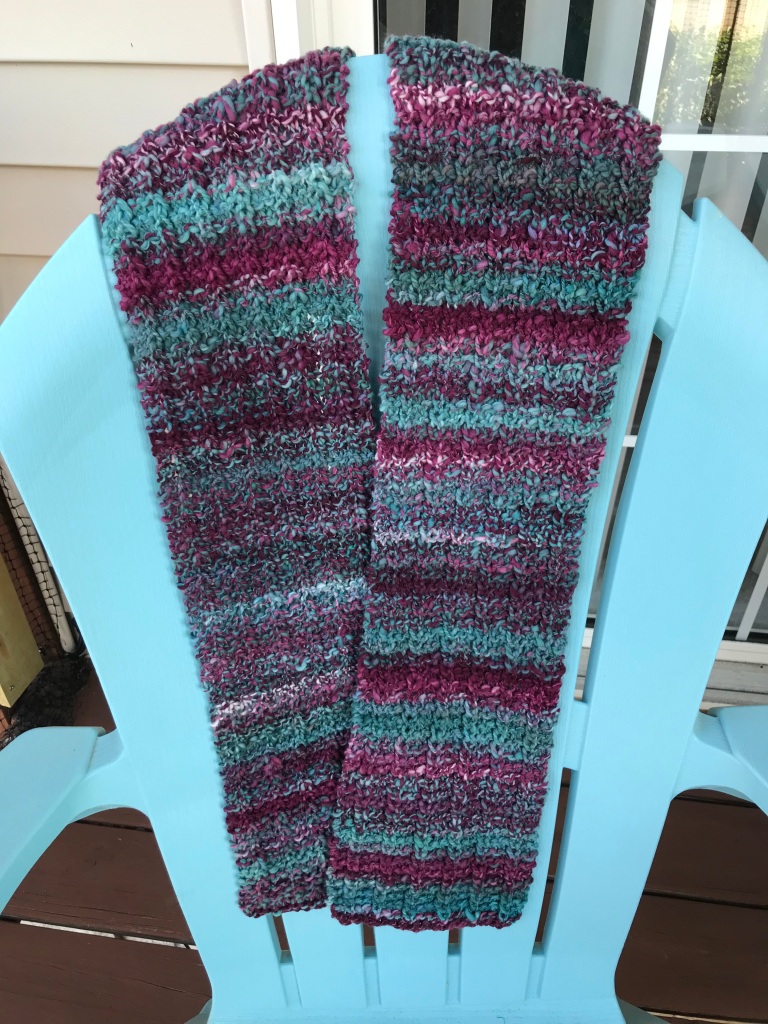
This is a recent scarf knit from hand-spun Rambouillet.
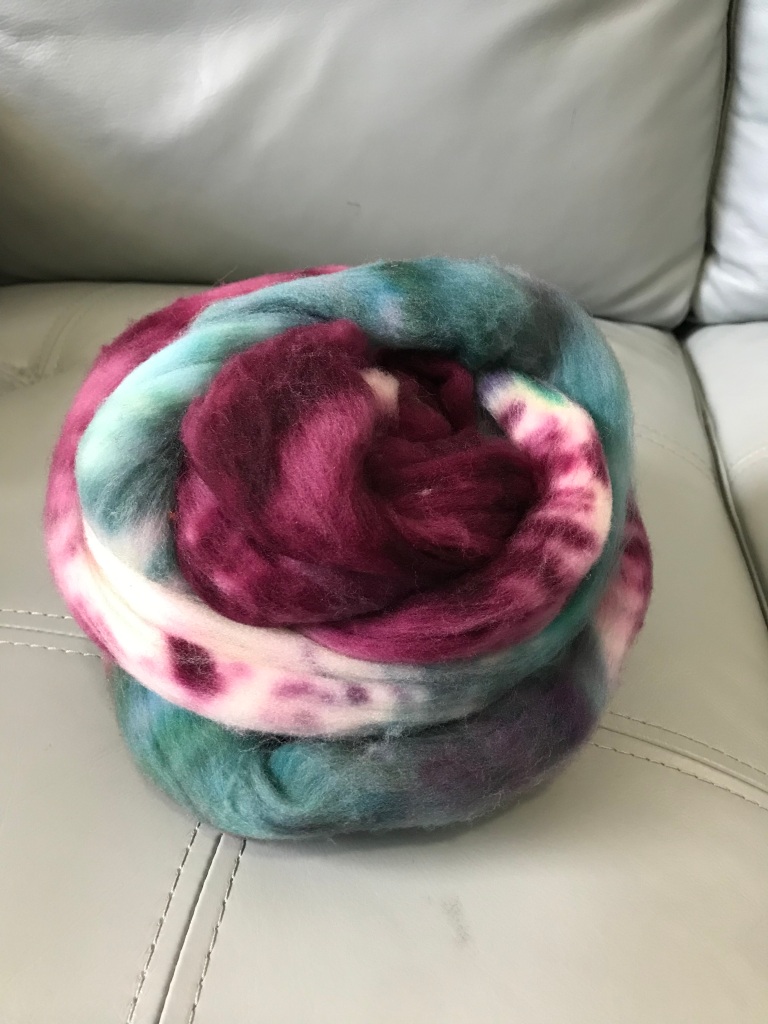
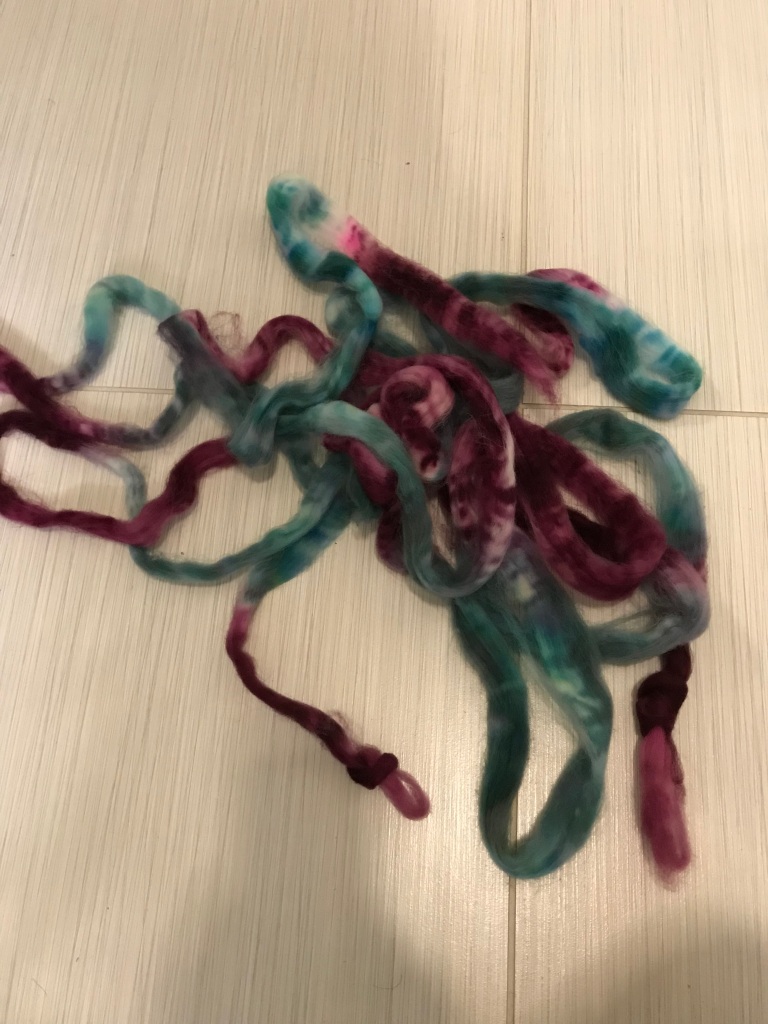
I bought this hand dyed braid at a spinning event in early 2020, just before the pandemic. I loved the colors. This was well before I had tried any dyeing myself, so it all still seemed like magic. I decided to spin it as a fractal spin. I divided the braid in half lengthwise and then divided half of it again. I really need to keep better notes since I can’t remember exactly how many time I divided it.
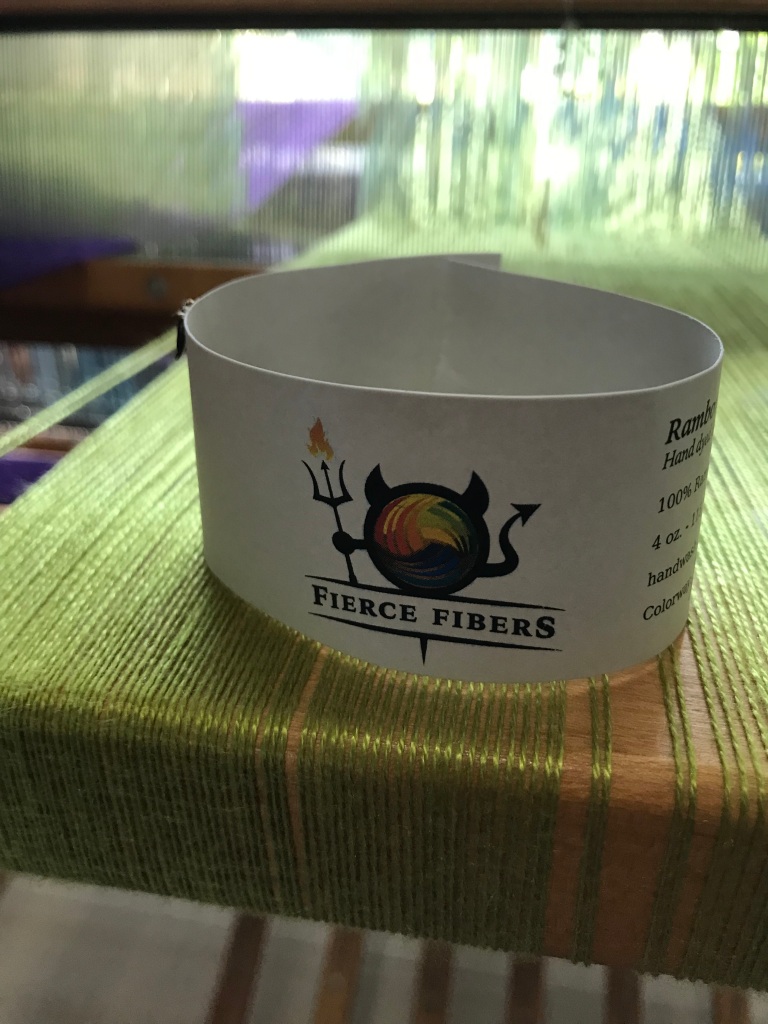
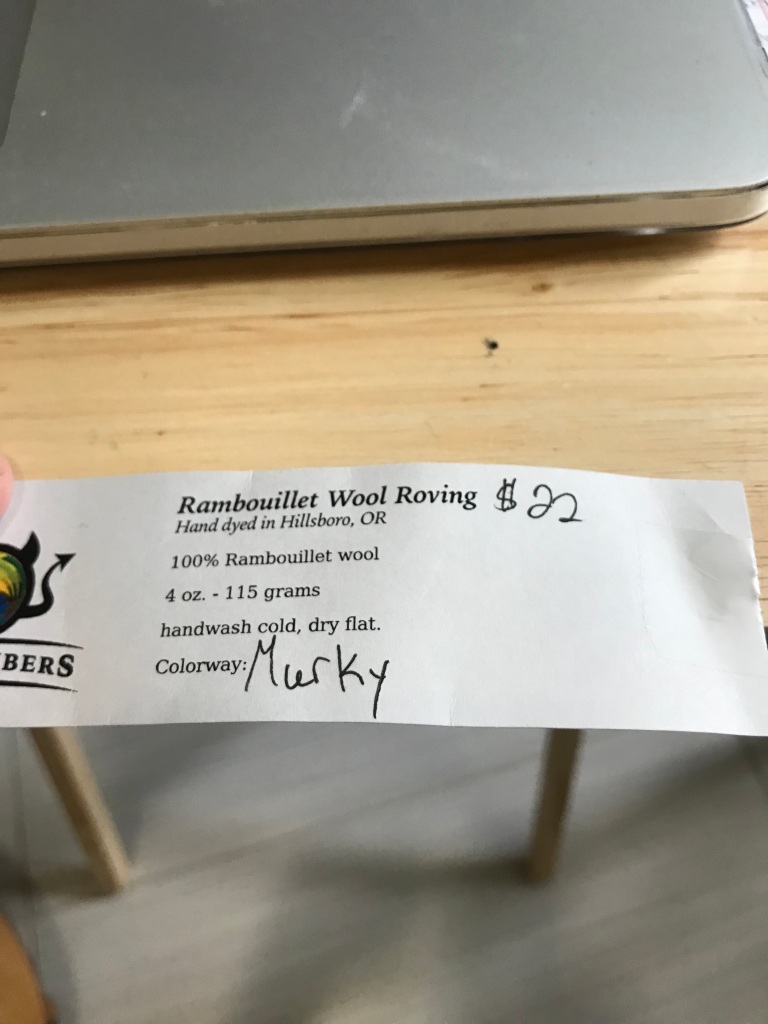
Sadly I don’t think this artist is dyeing braids anymore, just yarn. But I love the color, Murky. And I love spinning Rambouillet.
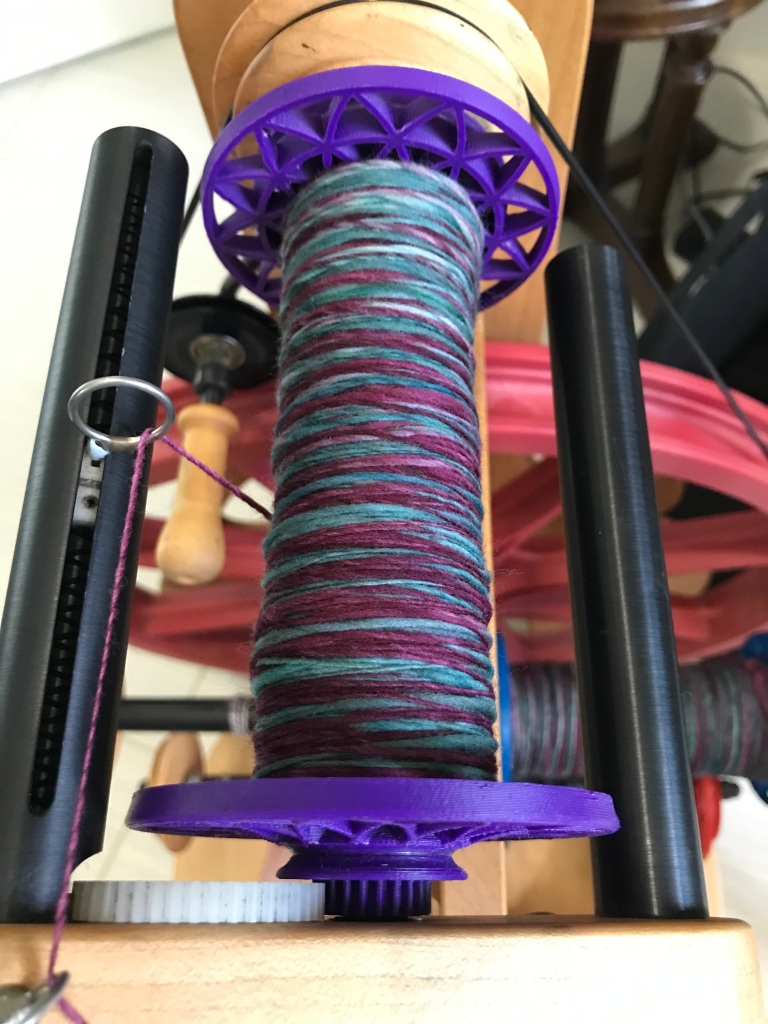
I was spinning it on a wheel that has a Woolee Winder which constantly moves the yarn back and forth on the bobbin. In this way, there are no built up piles of yarn on the bobbin. There are advantages, you can usually get more on the bobbin and you are relieved of the task of moving the yarn guide periodically. But, you also don’t get to see the individual colors as they appear.

I plyed the yarn on my EEW 6.0 electric wheel because it has a large 8 ounce bobbin. Right from the start you can see the colors come together and then move apart.
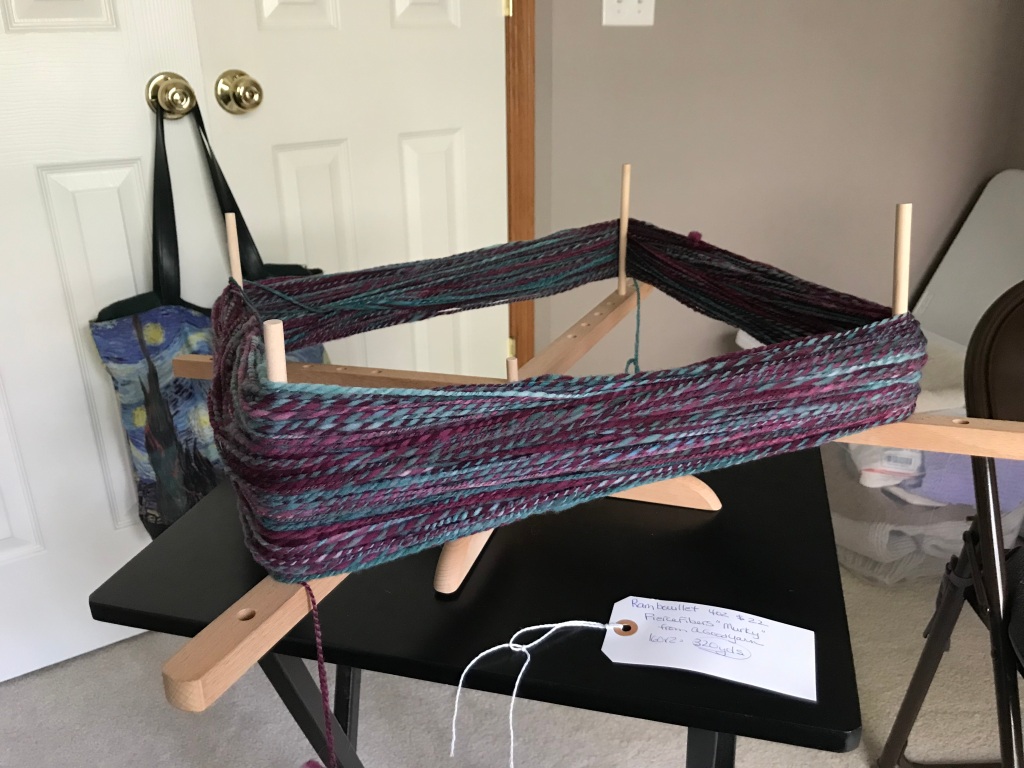
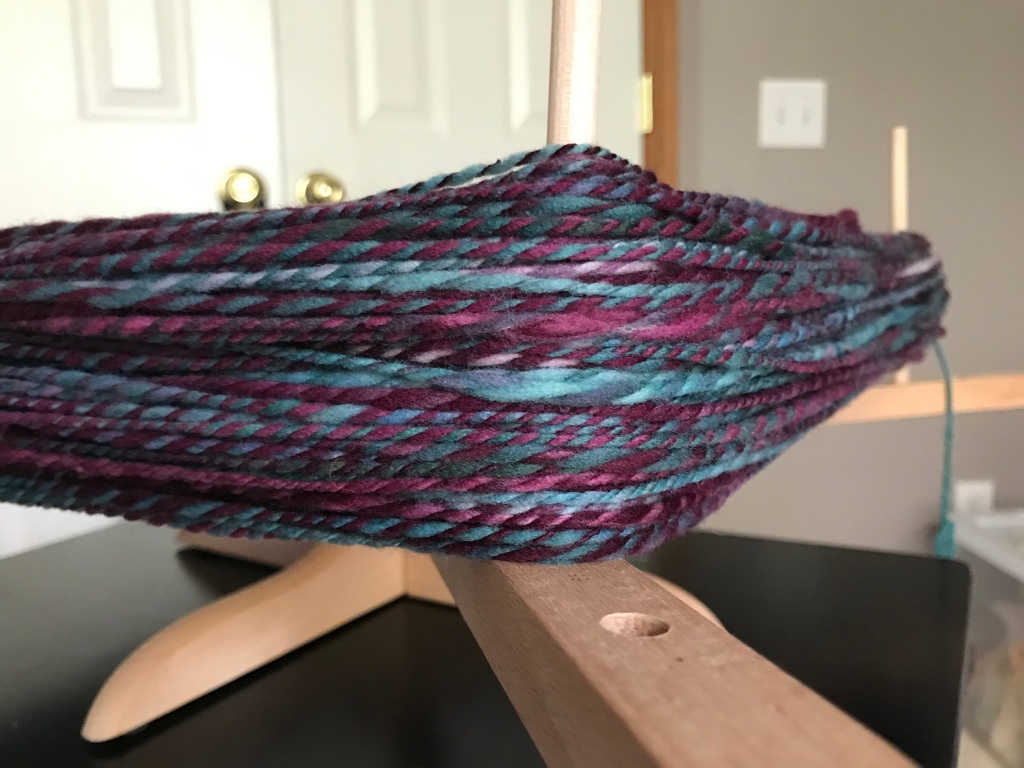
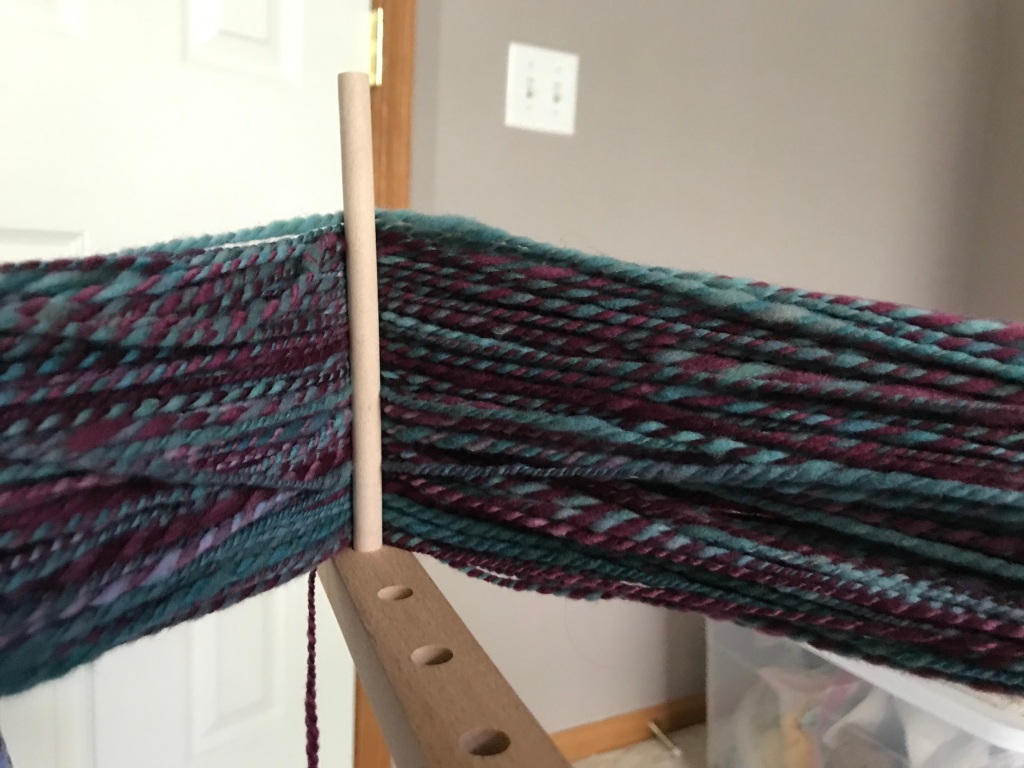
After finishing I counted 320 yards. It was fun to just look at. But eventually I decided to knit a scarf that my knitting group friends were raving about.

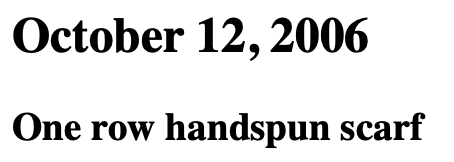
The pattern for the one row scarf can be found on the Yarn Harlot blog.
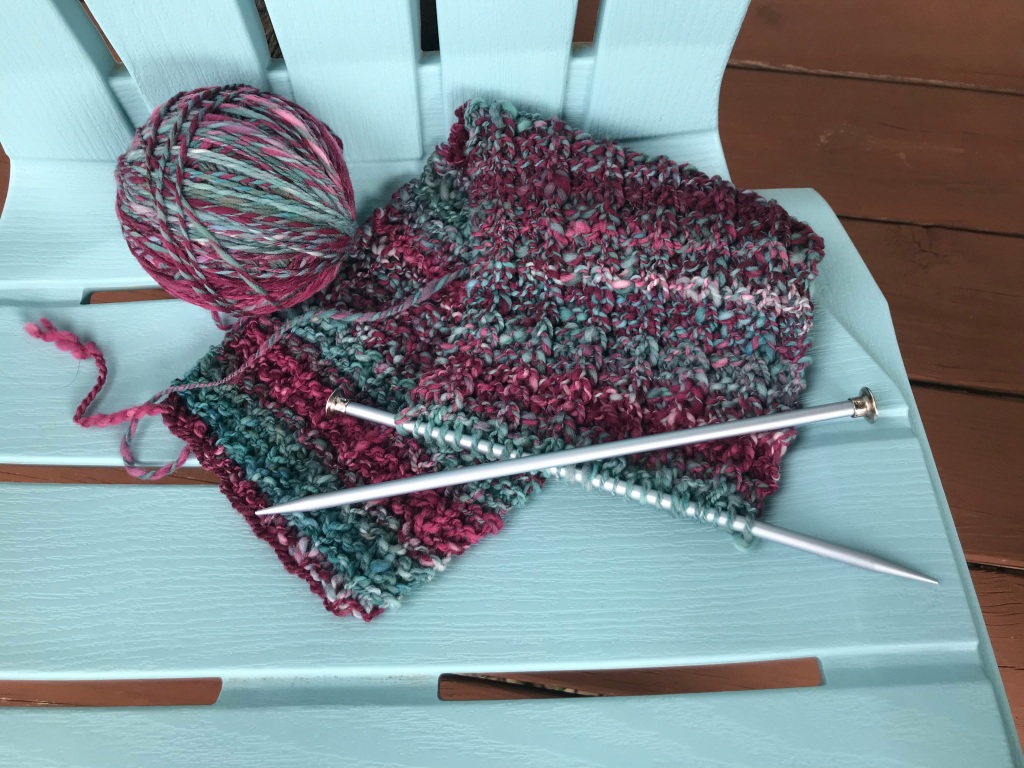
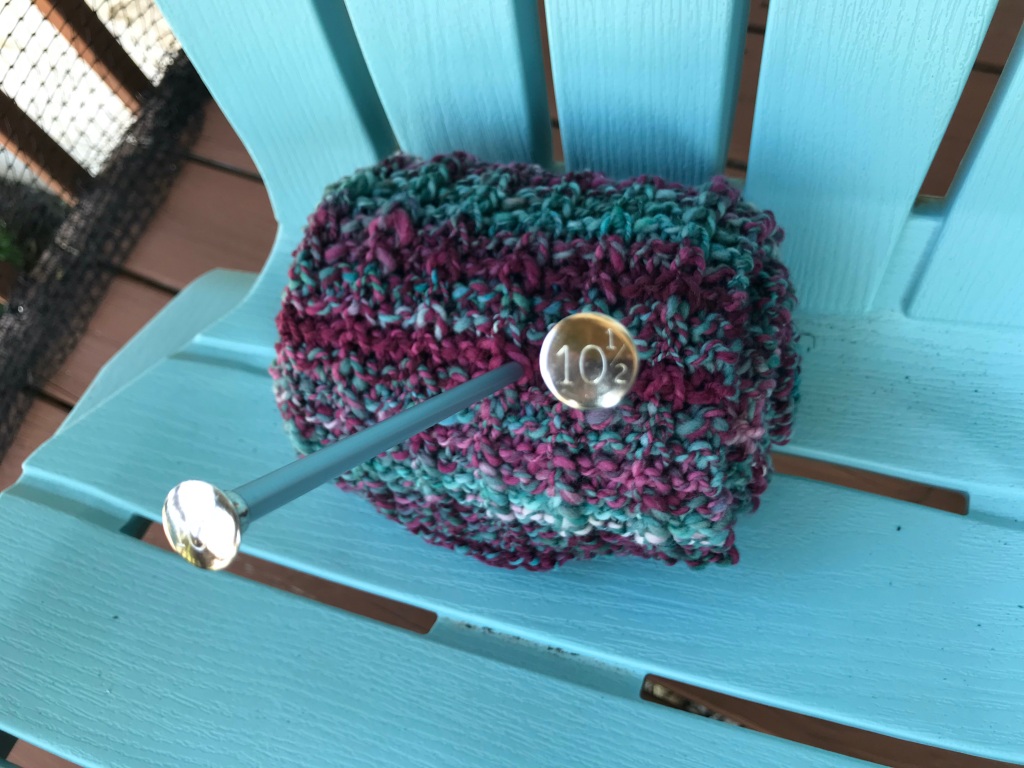
After winding the yarn into the ball that I like to knit from, I tried several needle sizes and settles on US10.5 needles and CO 26 stitches.
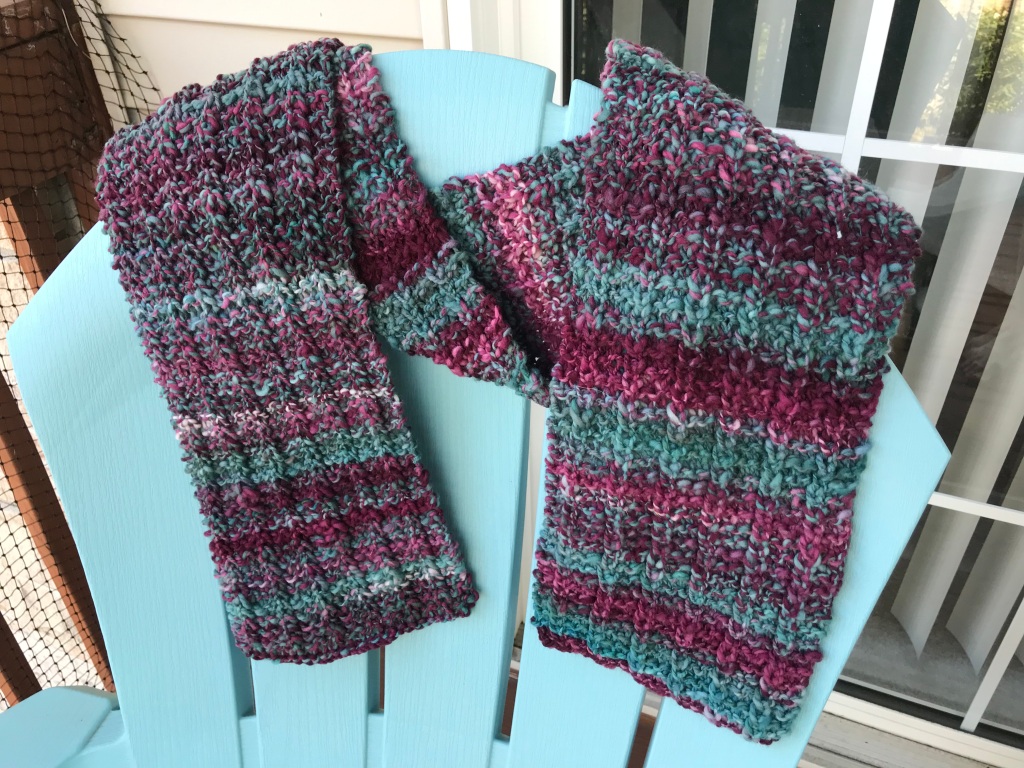
I didn’t want any yarn left over so I just kept knitting and the scarf is about 6 feet long. This picture really shows how the fractal spin causes the colors to move in and out of sequence. Sometimes the red and greens are together and sometimes they are mixed.
I hope you like the scarf, spun from Fierce Fiber wool and knit with a pattern from Yarn Harlot. As always, your polite and helpful comments are welcome.

This blue sweater took a long time. I started it pre-pandemic. I bought the batts from a woman in our spinning group, spun the fiber, and then knit the raglan sweater. I learned a lot and enjoyed the entire process. … Continue reading

After traveling north, I finally got a chance to wear my new cowl. It is hand knit in yarn that I spun and from a pattern that I invented. I don’t expect to see another like it as I walk … Continue reading

Last summer (2021) I attended a class on blending fiber for spinning. It was the first “in person” class I had attended since the pandemic. The class was held at Sievers School of Fiber Arts on Washington Island in Door … Continue reading

I just finished knitting this cape using two yarns held together, one that I spun and the other that I dyed. The pattern is October Cape by Shaina Bilow. It is available on Ravelry. The suggested yarns are Yarn Snob … Continue reading

This is the first sweater that have knit for myself from my own hand-spun yarn. The pattern is Amur Maple, a DROPS pattern found here: Amur Maple pattern. The pattern is great, the tree that it is named for, not … Continue reading

This cowl, called Be Sweet Mod Cowl by Eli McHugh, is the first thing I have knit in the mosaic style. The group I zoom knit with is always coming up with ideas about things we should all try. Recently … Continue reading